Grand stone, hand-forged iron, rich textiles, and heraldic motifs — medieval home decor balances rugged craftsmanship with storied elegance. Whether you’re outfitting a whole great hall or adding a single accent, the 25 ideas below translate period materials and forms into practical, people-friendly upgrades. Expect advice on placement, maintenance, and modern substitutions, so you can weave authentic Middle Ages atmosphere into twenty-first-century life and invite guests to linger like honored travelers at a fire-lit feast.
1. Stone Feature Walls for Medieval Atmosphere
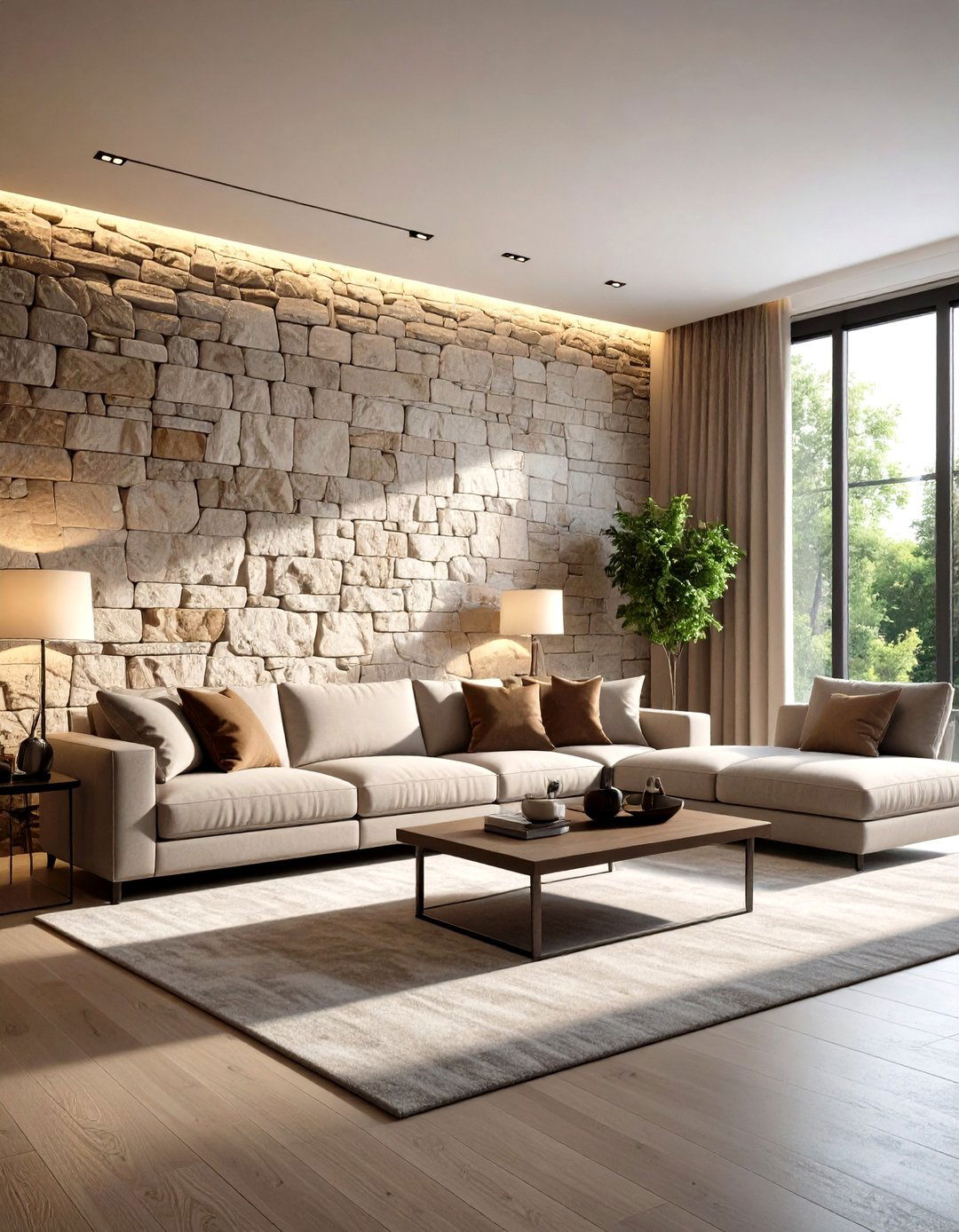
A towering expanse of pale limestone or rugged field-stone instantly roots a room in medieval reality, because original great halls relied on thick masonry both to bear roof loads and to damp winter chill. Translate that permanence into today’s home by cladding a fireplace breast, staircase wall, or kitchen backsplash with veneer stone panels or lime-washed brick. The irregular texture brings shadow play that feels candlelit even in daylight, while neutral mineral hues let tapestries and ironwork pop. Seal the surface with breathable silicate sealer so the stone keeps its matte authenticity, and spotlight it at night with warm LED uplights tucked at floor level.
2. Exposed Timber Beams in Medieval Rooms
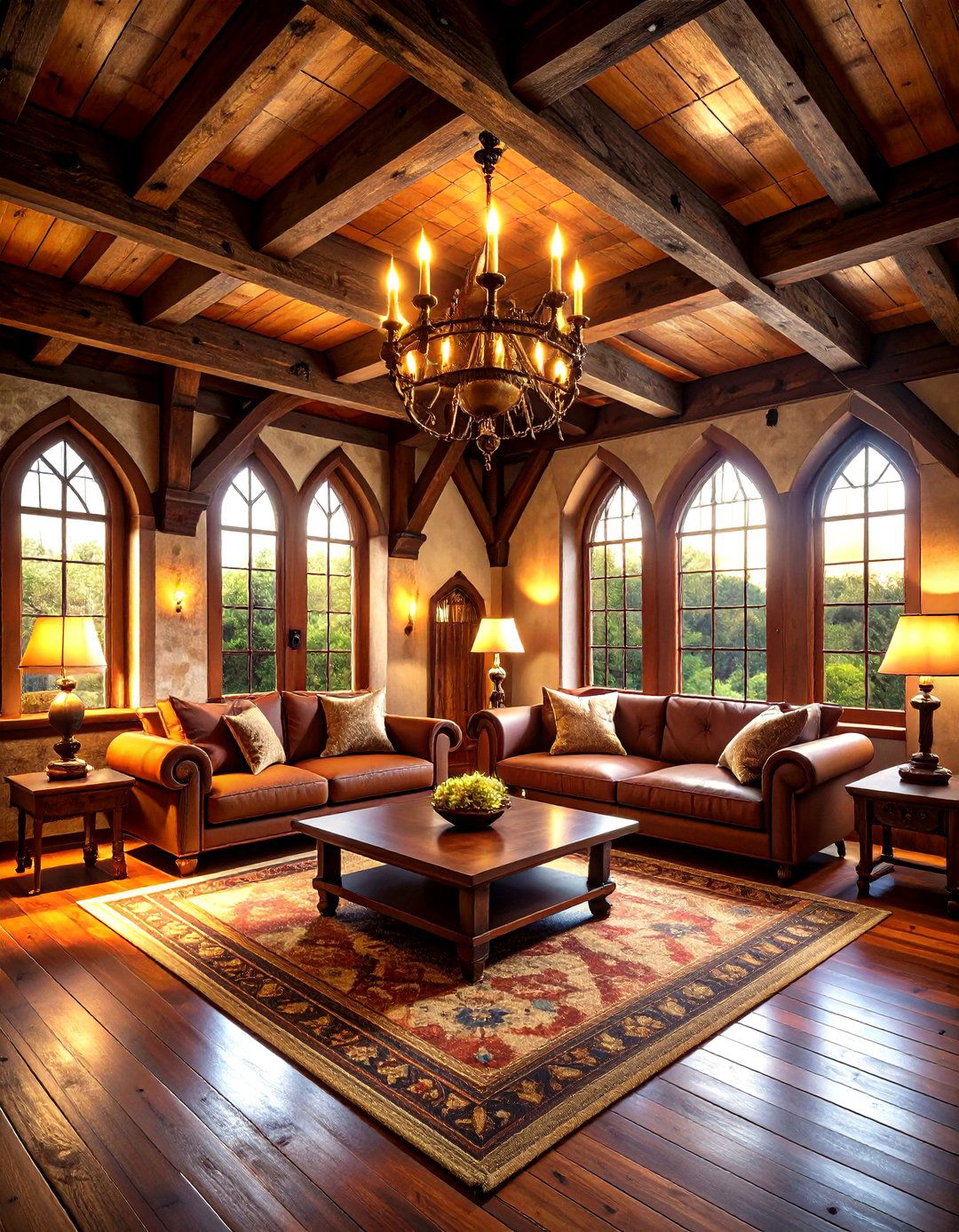
Consider leaving your ceiling structure proudly on display: exposed oak or fir beams were common in half-timbered medieval houses and castles, their darkened grain telling centuries of stories. If you don’t own historic joists, faux-aged beams made from reclaimed barn wood or lightweight polyurethane give the same visual heft without structural work. Stain them a deep walnut and add hand-forged strap plates to emphasize craftsmanship. Recessed spots placed between beam bays preserve rhythm, while iron pendants on black cloth cords echo smith-made hardware. The resulting ceiling draws the eye upward and visually widens tight rooms.
3. Wrought-Iron Chandeliers for Medieval Glow

Nothing conjures banquet-hall drama like a ring of iron studded with candles or Edison bulbs. Spanish-Gothic reproductions, still hand-forged in Tuscany, mirror originals that once illuminated monasteries and castles. Online artisan marketplaces offer everything from small six-arm fixtures to grand 12-light wheels, many aged with beeswax for time-worn patina. Hang a chandelier roughly 34 in / 86 cm above a dining surface and swap in 2200 K filament LEDs for safe, flicker-warm ambience. Hidden hooks let you replace bulbs with real pillars during special feasts.
4. Medieval Tapestry Wall Hangings

Richly woven hangings once insulated stone while proclaiming lineage or faith. Designers today treat a tapestry as a bold focal art piece above beds, sofas, or stair landings. Choose scenes in deep reds, indigos, and forest greens; mount heavy fabrics on a wrought-iron rod so they breathe, and use lighter jacquard reproductions with Velcro in rentals. Vacuum monthly on low suction and keep out of direct sun to preserve centuries-old hues.
5. Heraldic Shields for Medieval Statement Walls
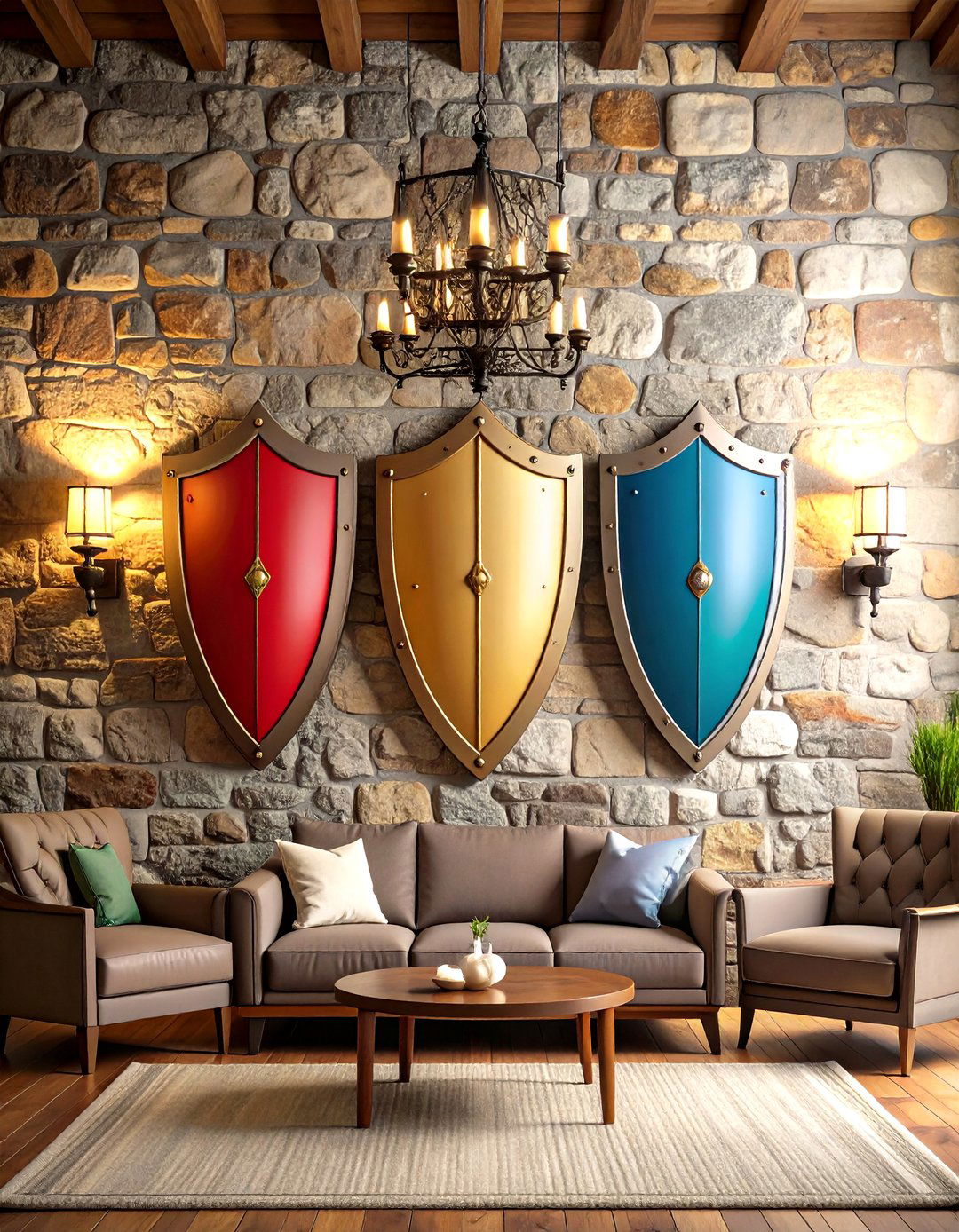
A coat-of-arms shield instantly commands attention, just as it once identified knights in battle. Lightweight resin or metal replicas make dramatic trios above consoles or fireplaces. Paint backgrounds in family colors or commission a custom blazon, then flank with slim sconces so rivets sparkle. Against stone or charcoal paint, the grouping feels ceremonial yet personal.
6. Gothic-Arched Mirrors for Medieval Drama
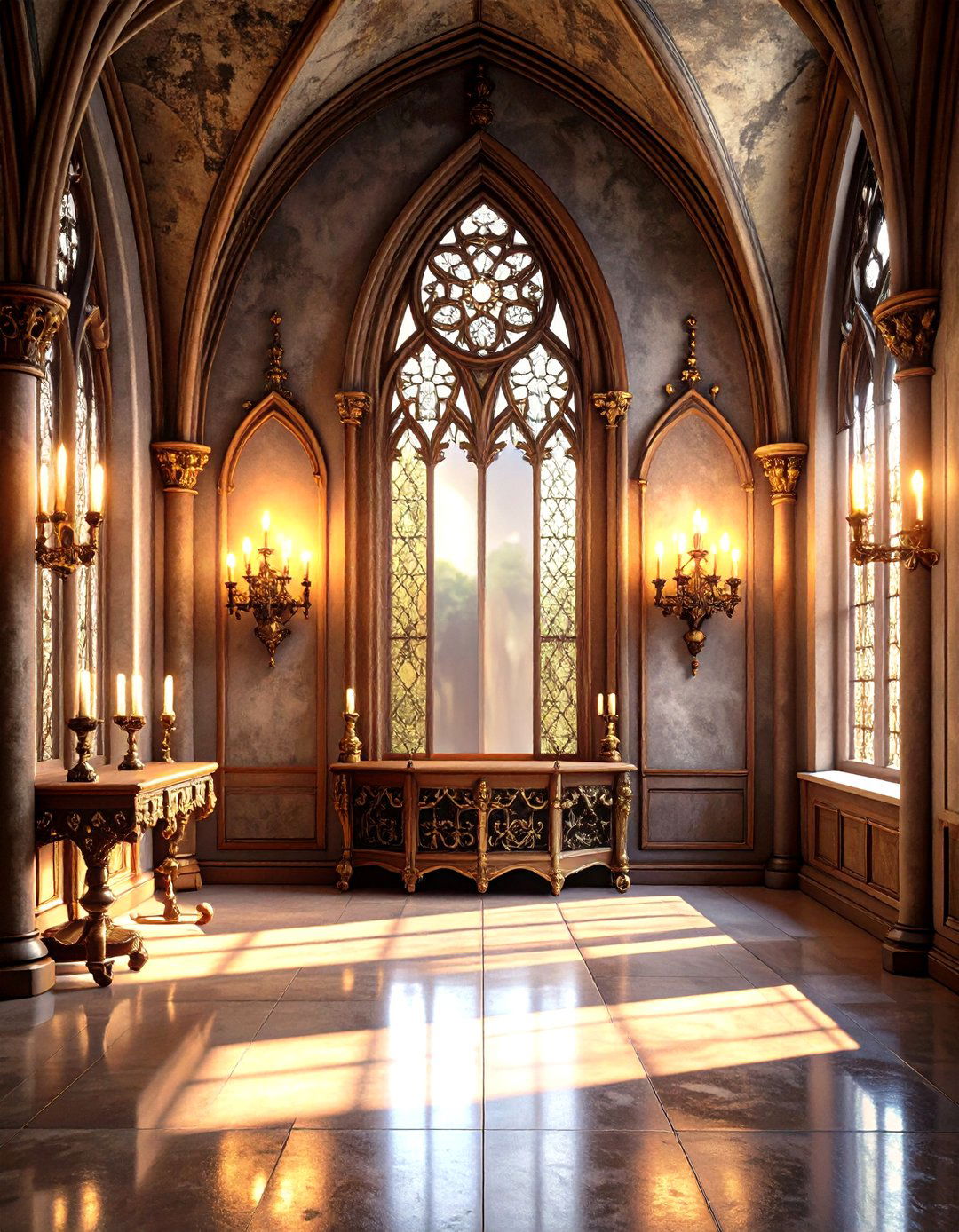
Pointed arches and tracery mullions echo cathedral windows, and replica wood- or metal-framed mirrors let you enjoy the silhouette without masonry work. Place one opposite a window to double daylight and emphasize vertical lift. Distress the frame with black wax, add faux lead strips, and pair with iron sconces for a prayer-niche vibe that softens boxy rooms.
7. Medieval Oak Refectory Table Dining
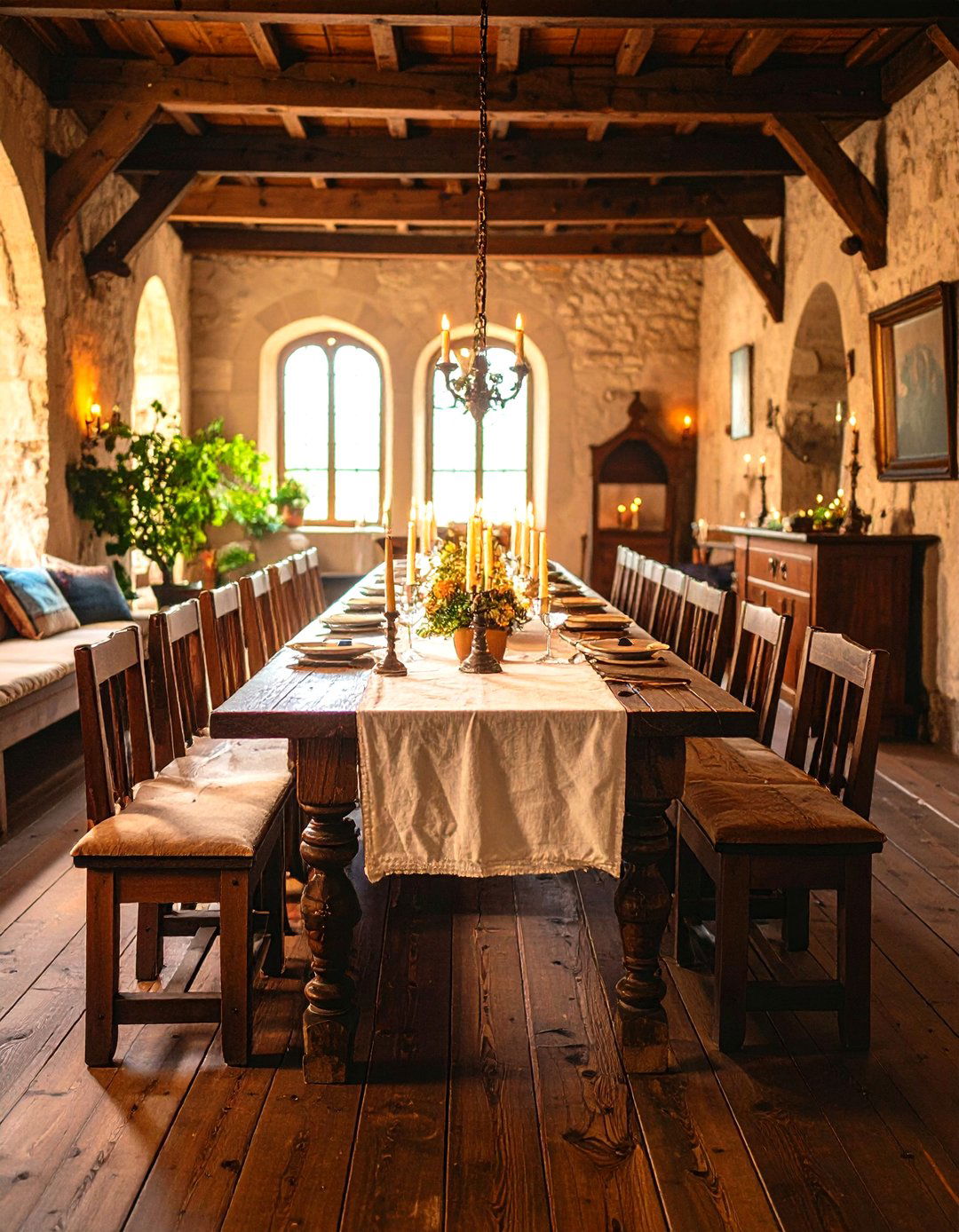
Long, hefty refectory tables fed monastic communities and castle households, their thick oak planks resisting knife marks and spilled ale. Modern versions keep baluster legs and a boot-level stretcher. Finish tops with food-safe hard-wax oil, slide benches beneath between meals, and temper the weight with linen runners and pewter candlesticks for authentic yet airy dining.
8. Rush Matting Floors for Medieval Texture
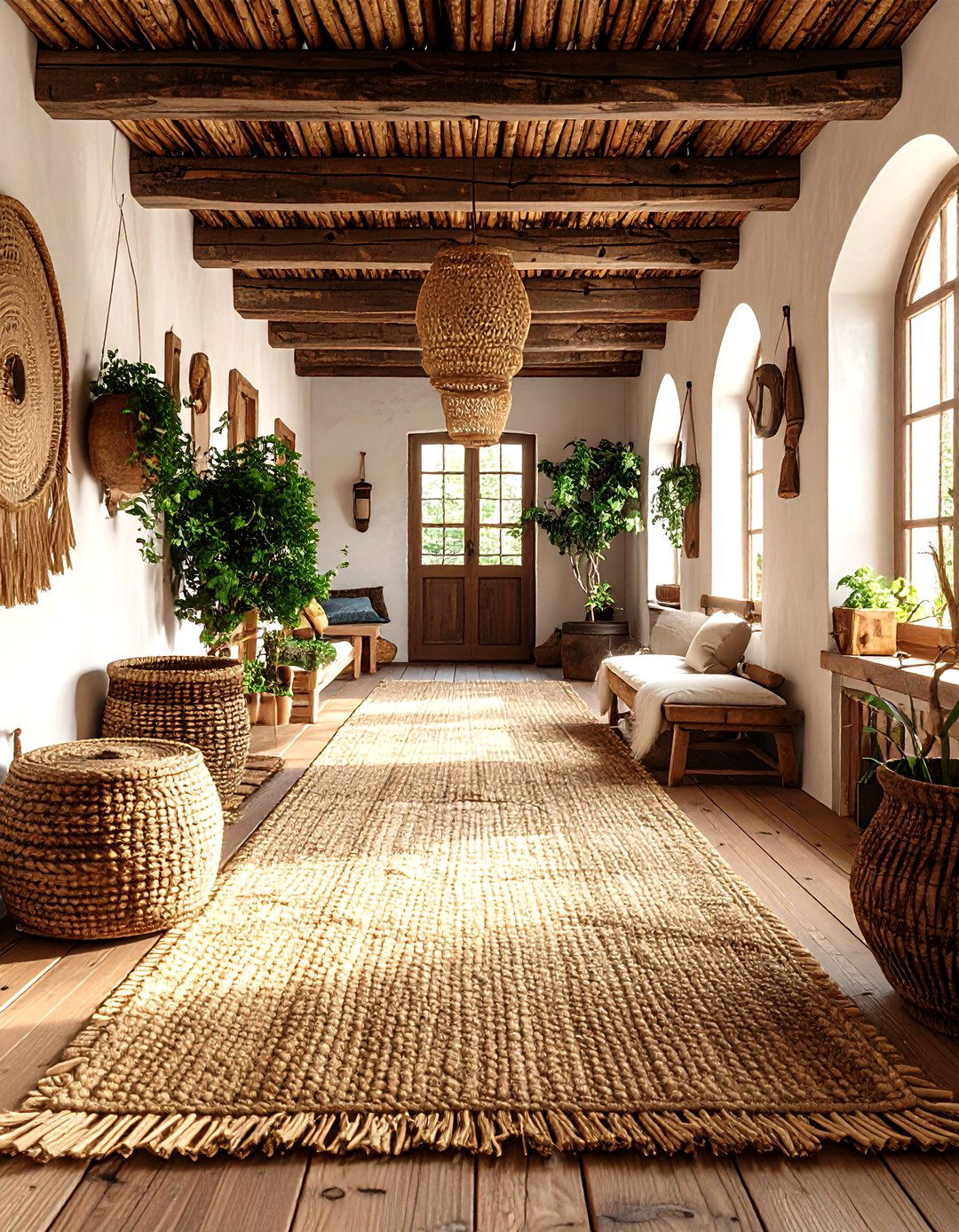
Before fitted carpets, households covered floors with woven rush mats that trapped dust and added spring underfoot. Seagrass or jute runners recreate that nubby texture while thriving in kitchens and mudrooms. Rotate mats seasonally to even out fading, vacuum weekly, and brush dampened areas to lift crushed fibers — a simple, authentically medieval flooring solution.
9. Medieval Canopy Bed Drapery
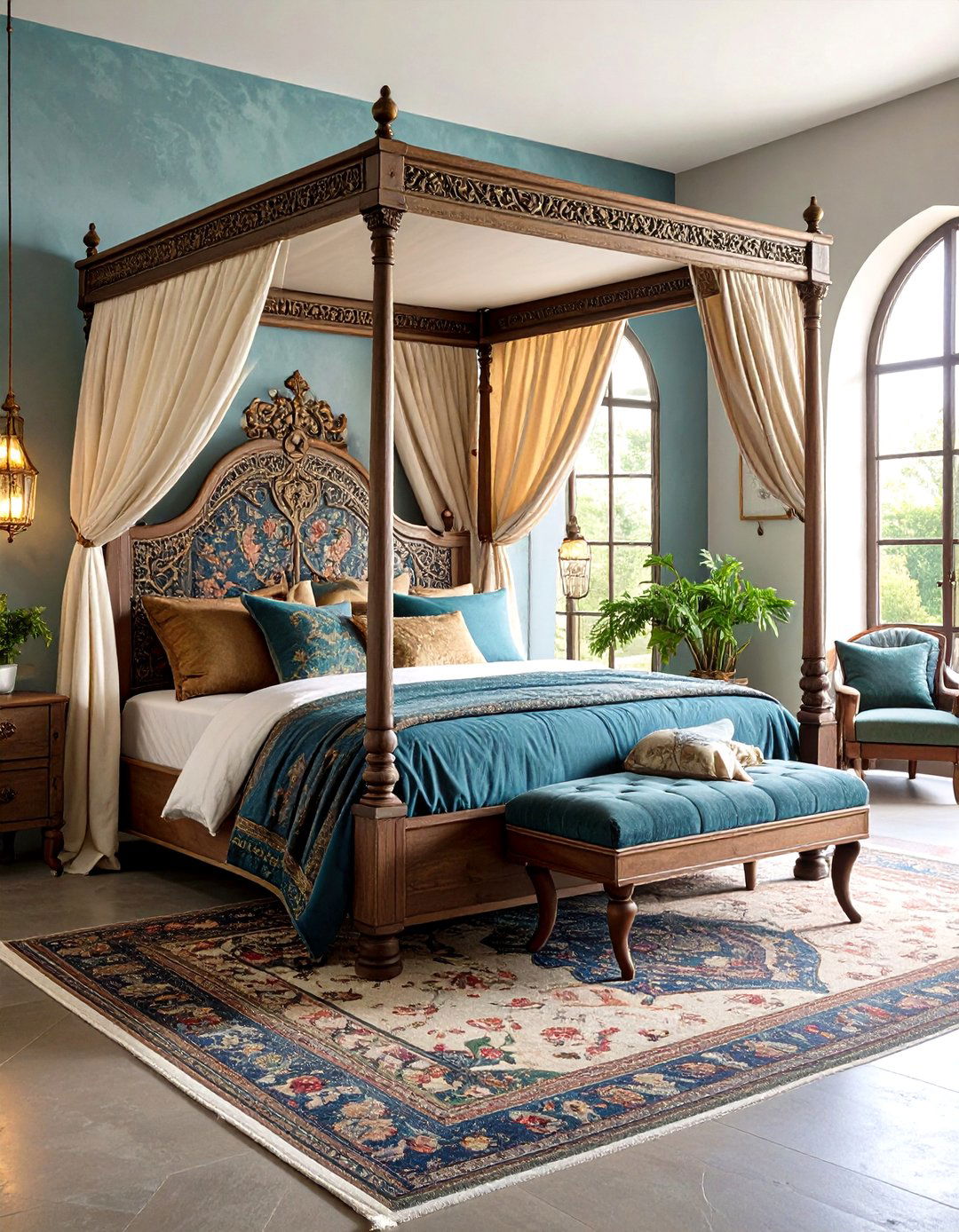
Four-poster beds emerged in the 15th century to grant privacy and conserve warmth — embroidered curtains advertised status. Modern castle designers still specify textile-lined testers for cocoon-like retreats. Hang velvet or heavy linen panels from wrought rings, or suspend them from a ceiling corona in tight rooms. Echo the fabric on a bench pillow to weave the theme through the space.
10. Medieval Iron Wall Sconces
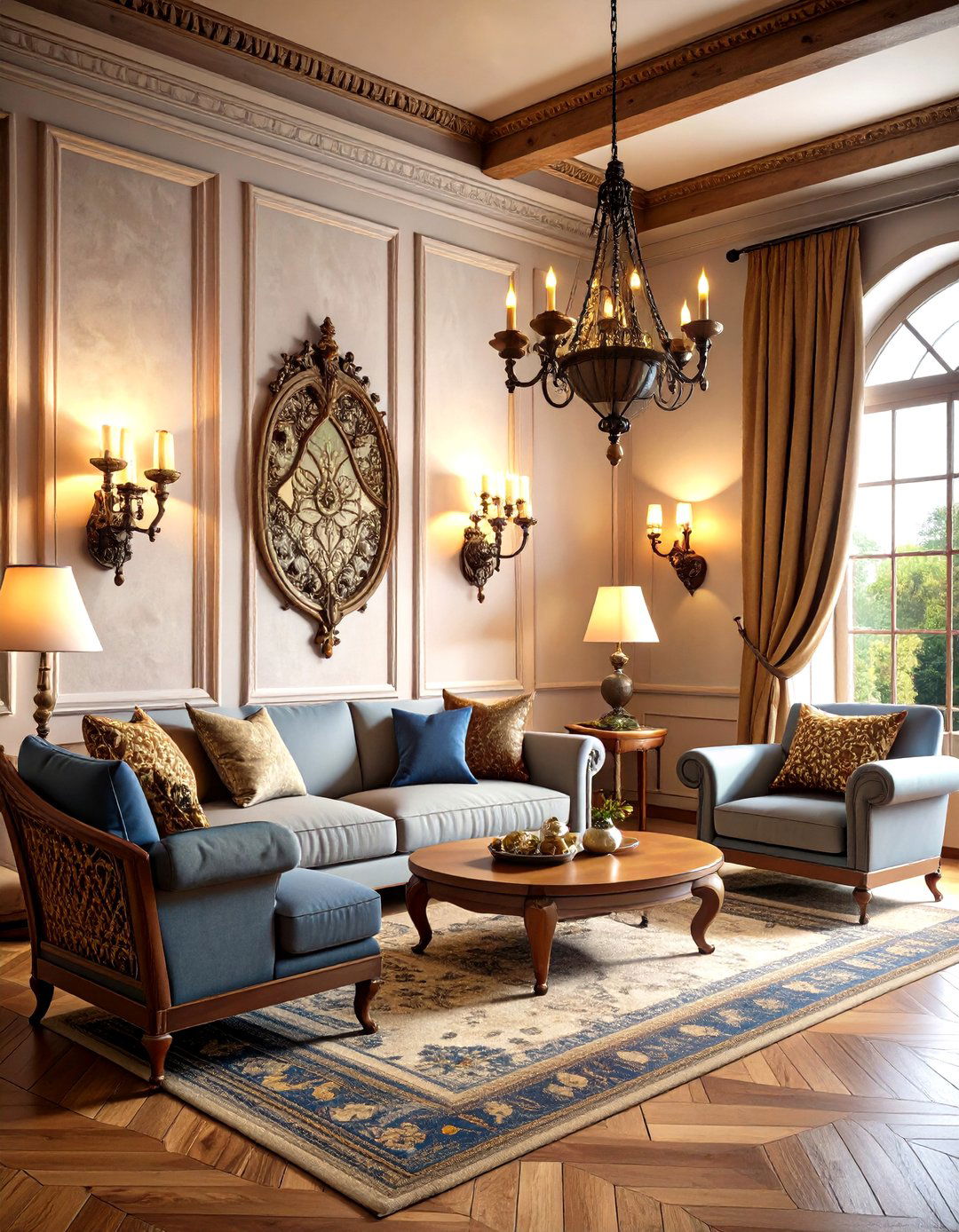
Torch-like sconces free tabletops while washing walls in layered light. Oversized wrought-iron examples with dragon or fleur-de-lis motifs abound in vintage and replica markets. Fit dimmable LED candelabra bulbs inside beeswax-dipped sleeves, mount about 165 cm off the floor, and flank artwork or arches for rhythmic medieval illumination.
11. Grand Medieval Stone Fireplaces
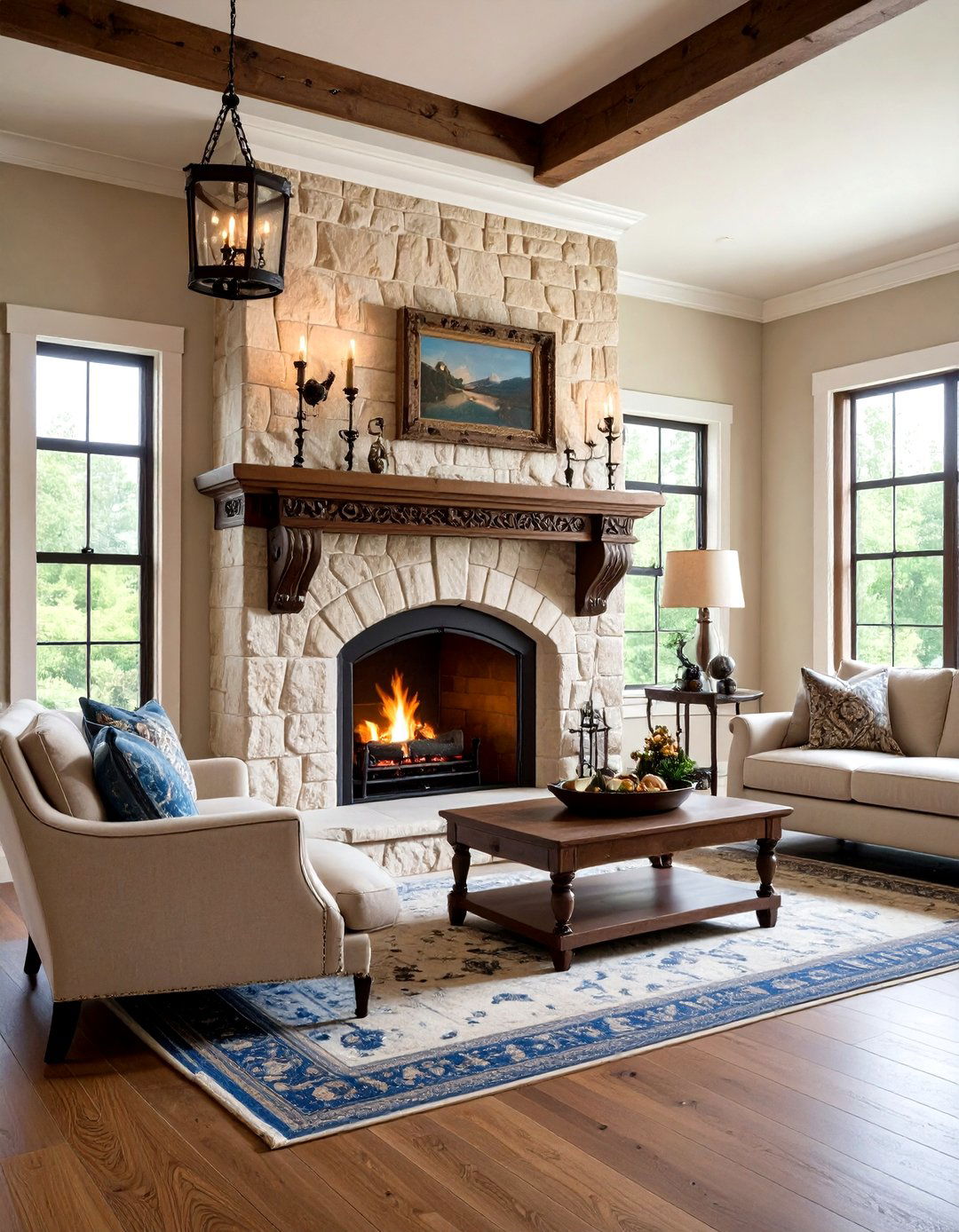
A stout inglenook fireplace formed the heart of medieval living, offering heat, light, and communal gathering. Re-create that gravitas with ceiling-height limestone, iron surrounds, and griffin-shaped andirons. Add a carved oak mantel beam and a trammel hook for subtle nods to cauldron cookery while improving efficiency with tight glass doors.
12. Medieval-Style Stained Glass Accents
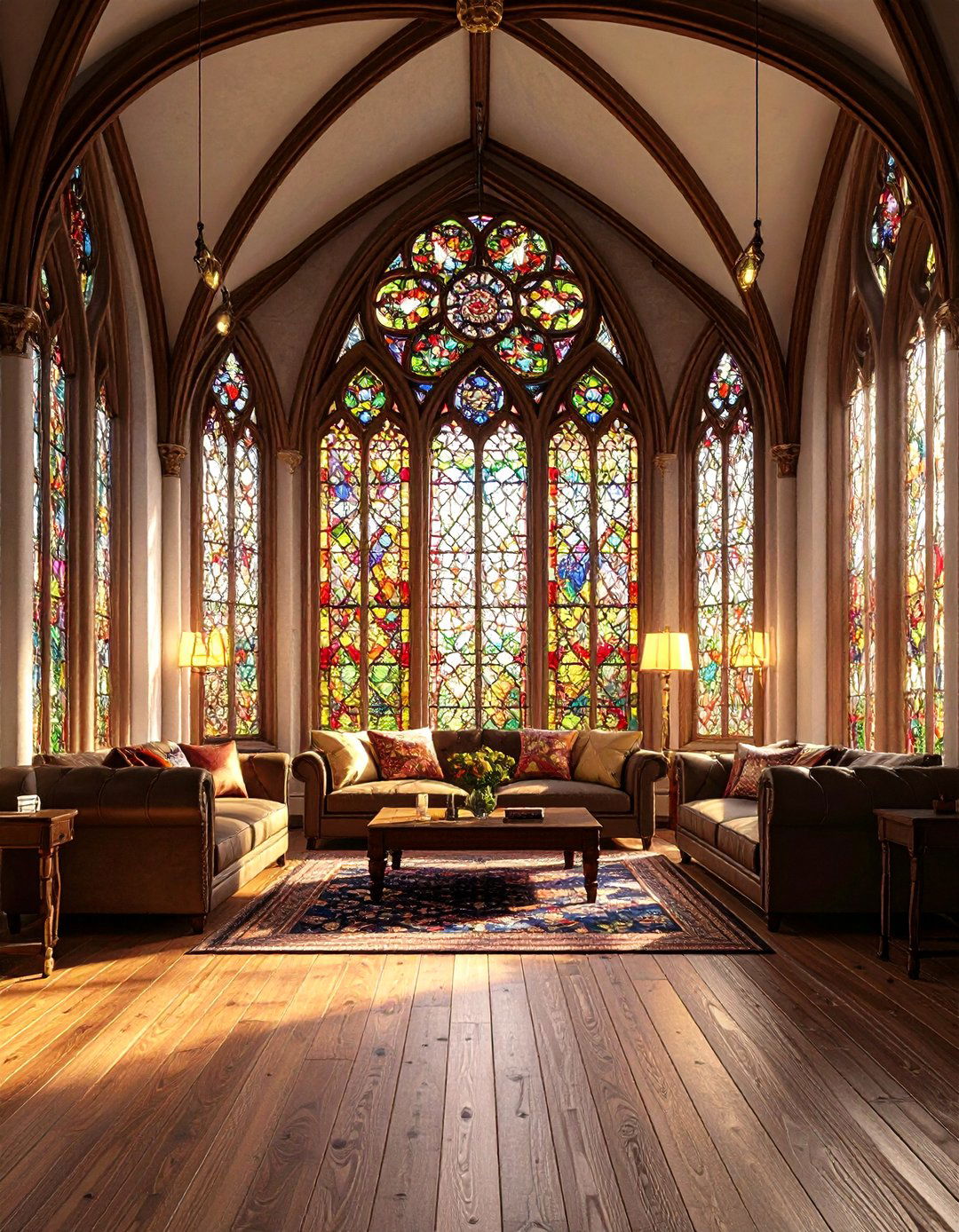
Color-saturated panes once narrated saints’ lives while softening daylight; even a modest suncatcher bathes rooms in jewel tones. Install Tudor-rose or heraldic panels as transoms or cabinet inserts with reversible silicone strips, or hang medallions on chains inside existing windows to create cloister-like light play.
13. Carved Chests in Medieval Storage
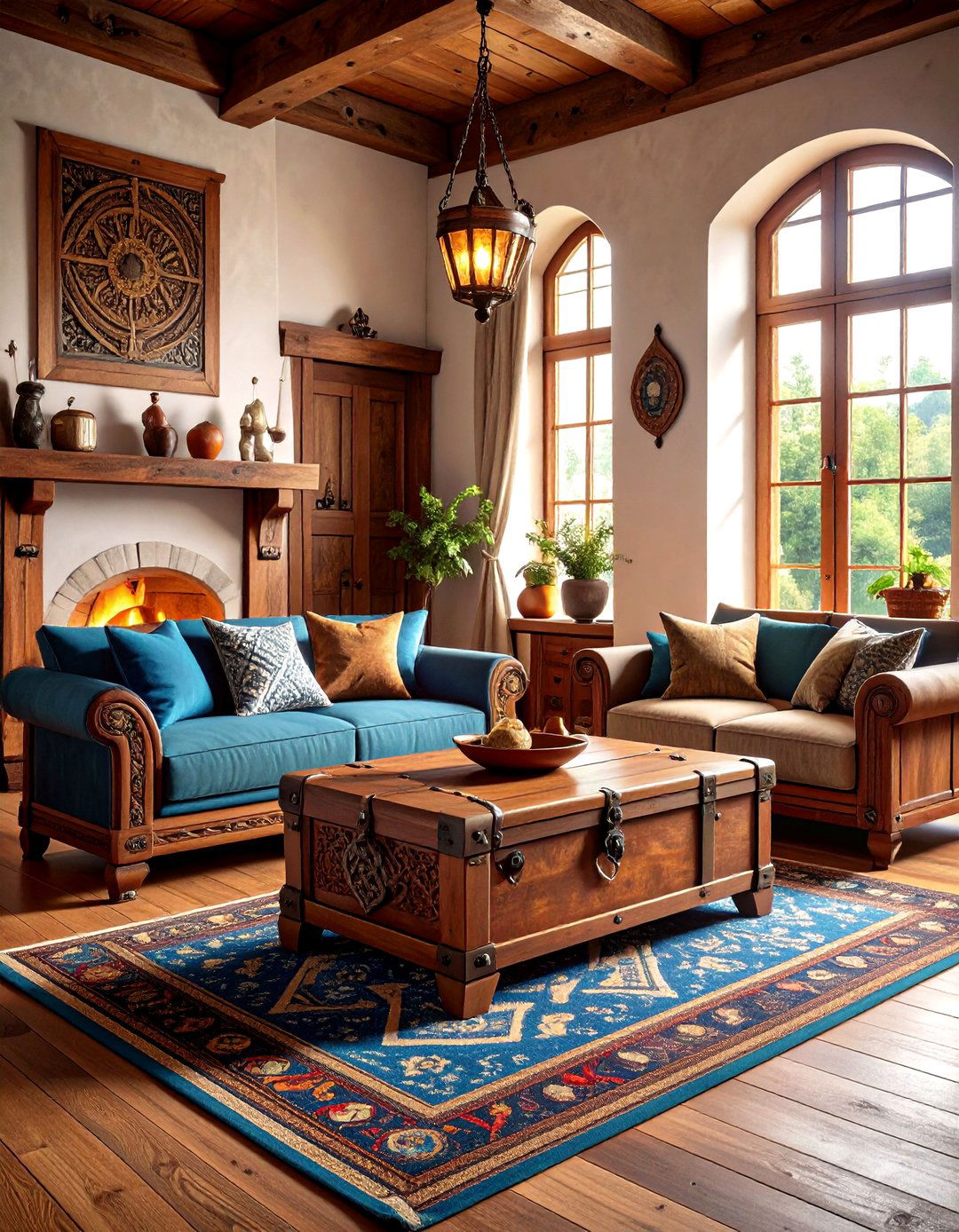
The coffer served as seat, table, and secure storage in medieval households, reinforced with iron straps and intricate carvings. Repurpose one as a coffee table, add slow-close hinges for safety, and stencil subtle knotwork on the front panel. Felt pads protect floors while the chest’s patina shares centuries-old stories.
14. Displaying a Medieval Suit of Armor
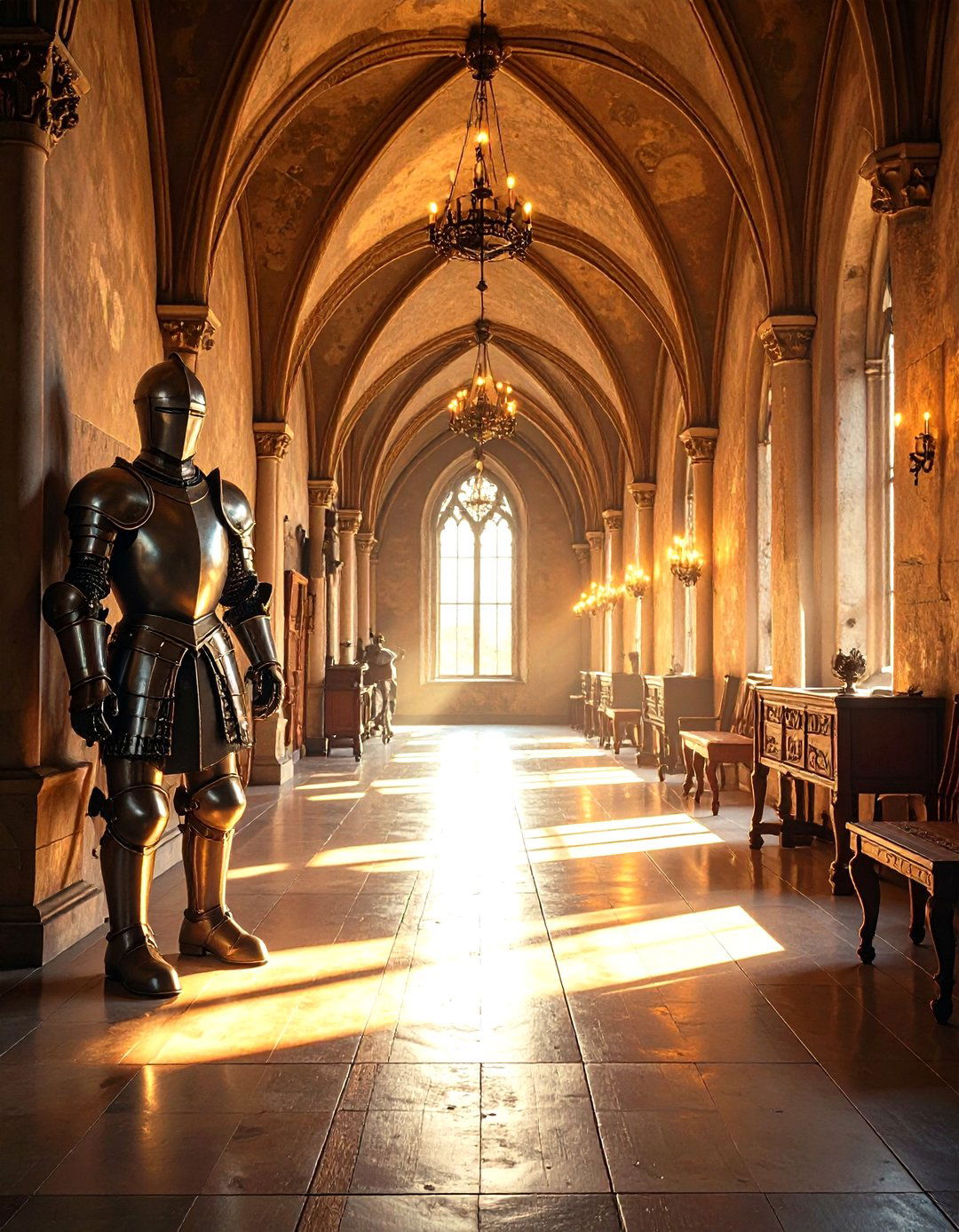
A gleaming suit of plate armor transforms a bland corridor into a great-hall tableau. Prefer smaller spaces? Showcase only a helmet or pair of gauntlets. Polish with micro-crystalline wax twice yearly and uplight from below so heroic shadows dance across linen-plastered walls.
15. Medieval Fresco-Inspired Wall Art
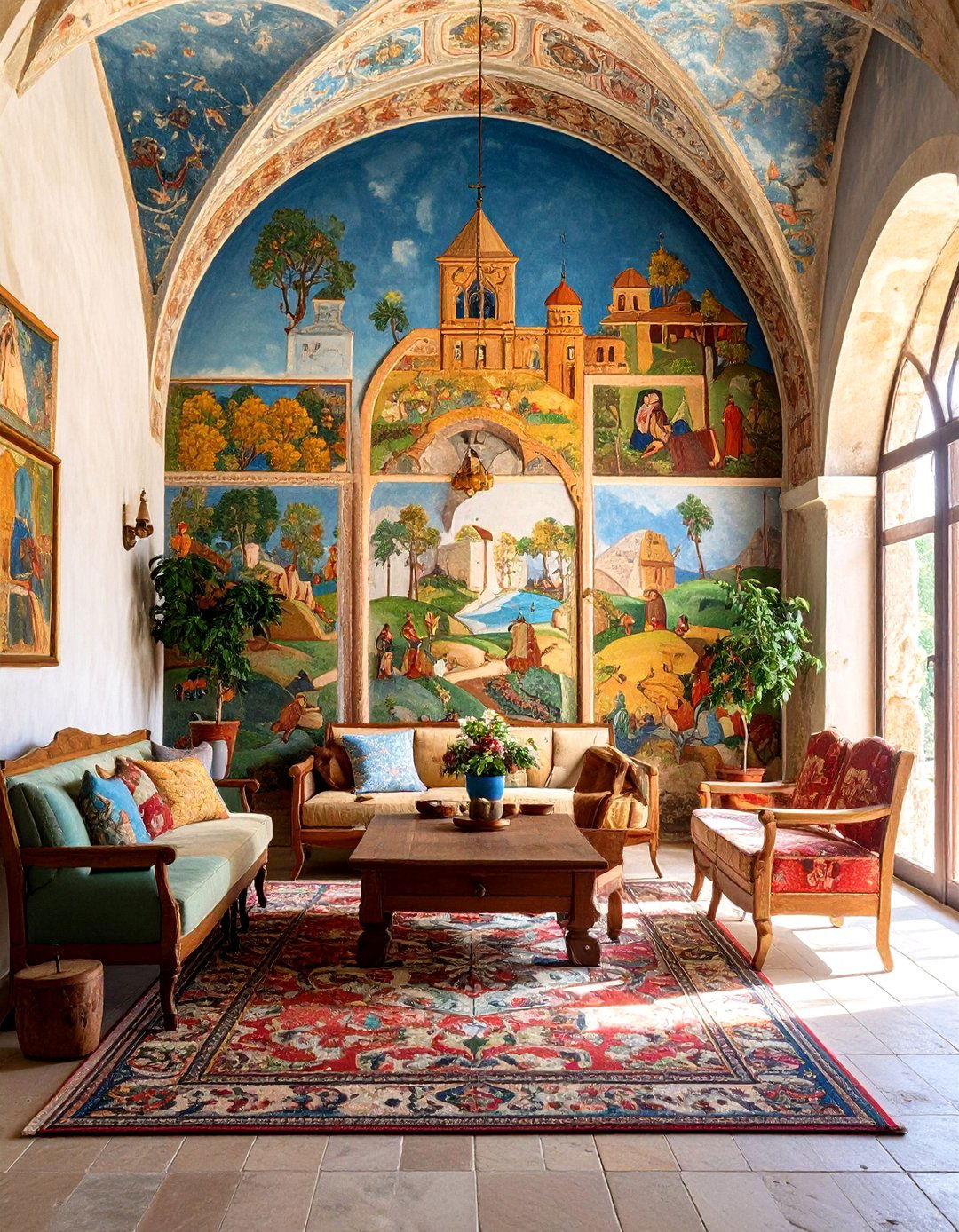
Surviving Romanesque fresco fragments prove mineral pigments can last 800 years. Bring that layered narrative home with canvas or plaster triptychs. Lime-wash the background wall to match historic groundwork, float the panels on French cleats, and enjoy a textured storybook backdrop.
16. Medieval Wool and Velvet Draperies
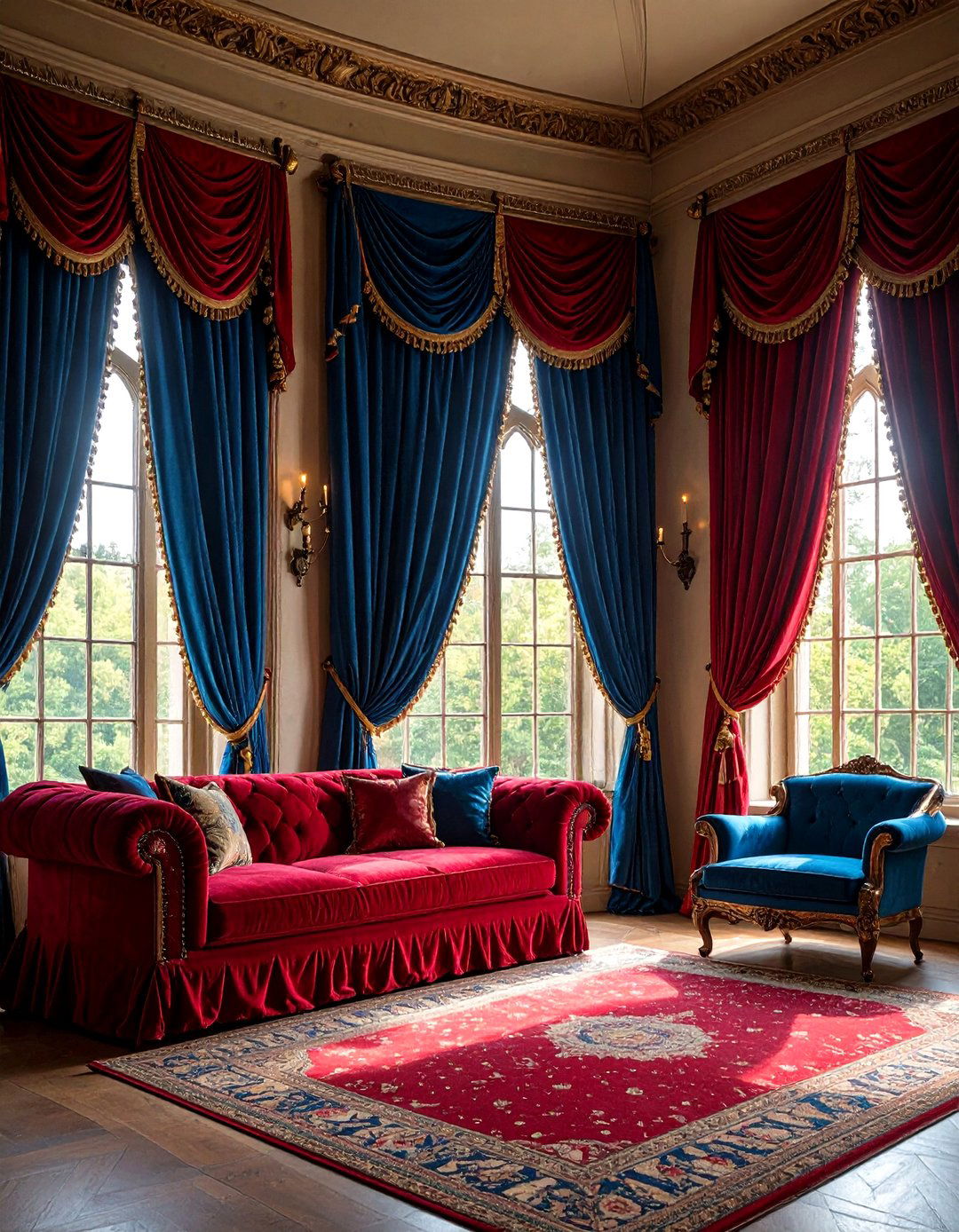
Wool was medieval Europe’s textile backbone, prized for warmth and flame resistance. Line velvet curtains with wool serge, trim with gold cord, and hang from iron rings to insulate tall lancet windows. Vacuum gently and steam rather than wash to keep fibers plush and color-rich.
17. Medieval Carved Screen Room Dividers
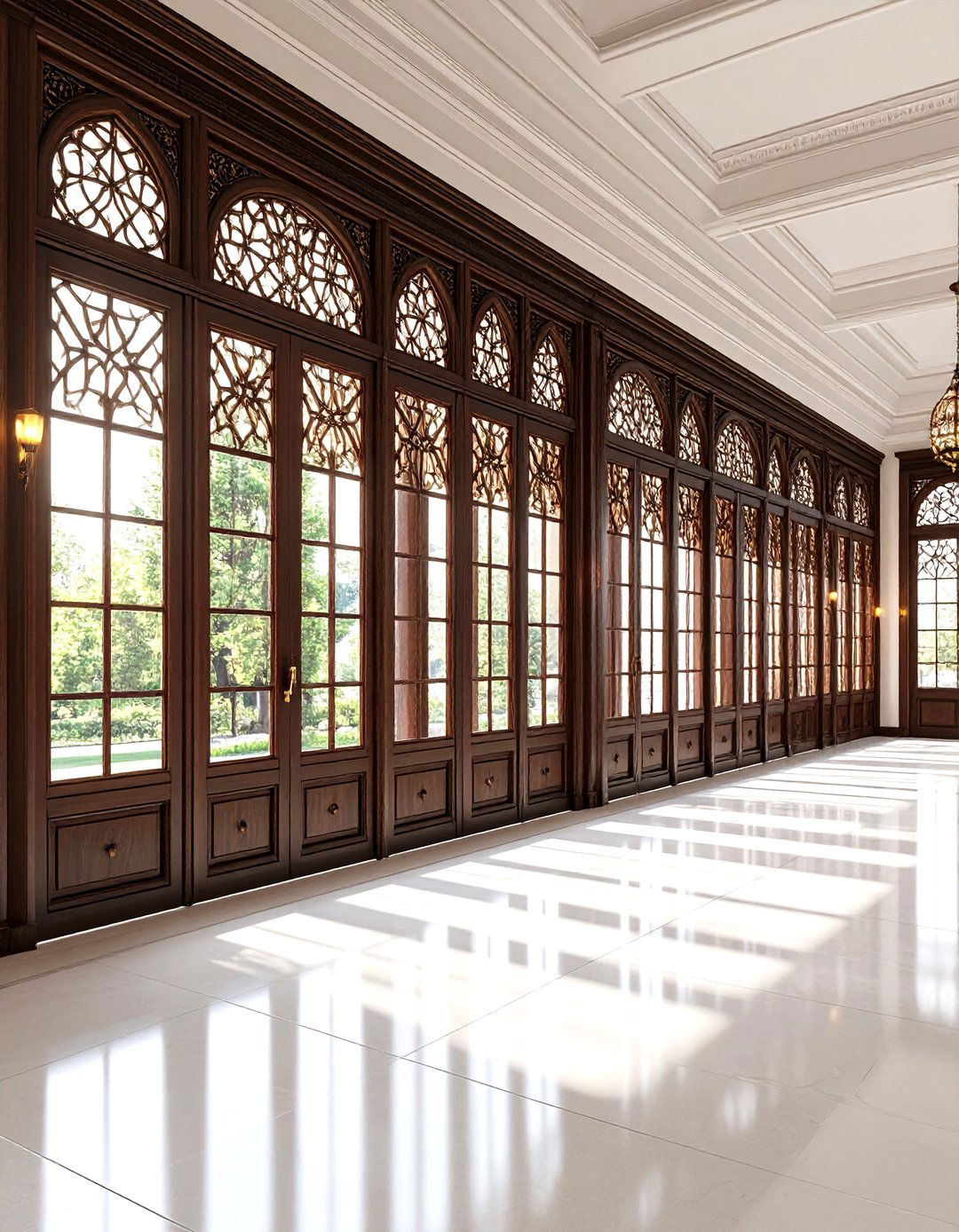
Folding screens with pierced quatrefoils or Moorish fretwork carve intimate zones in large halls. Choose teak or oak panels hinged by iron straps, wax to a low sheen, and angle behind sofas or vanities. Fold flat and tuck away when dancing or gaming nights demand open space.
18. Medieval Earth-Pigment Color Palettes

Historic interiors glowed with earth-based reds, ochres, indigos, and umbers — not stark white. Coat walls with clay-lime Venetian red, balance cabinetry in muted woad blue, and choose matte finishes free of brighteners so torch-like lighting is gently absorbed, not reflected.
19. Medieval Heraldic Rugs and Runners
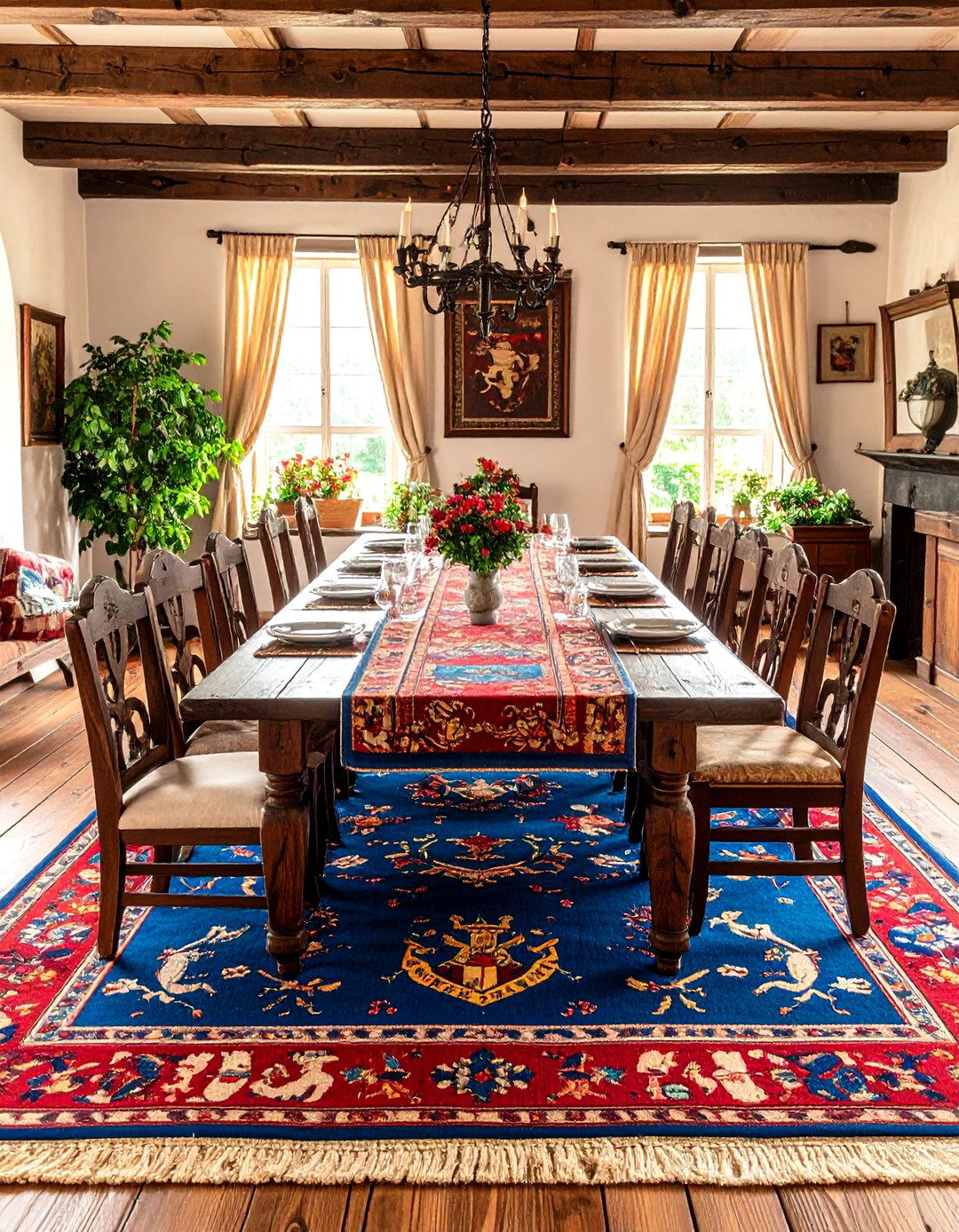
Coats of arms once decorated Spanish “Admiral” carpets and Flemish tapestries. Modern low-pile wool rugs replicate lion-rampant and castle motifs. Anchor a heraldic runner beneath a refectory table, vacuum with the beater bar off, rotate yearly, and use a pad over rush matting for cushioning and grip.
20. Medieval Pewter & Goblet Tableware
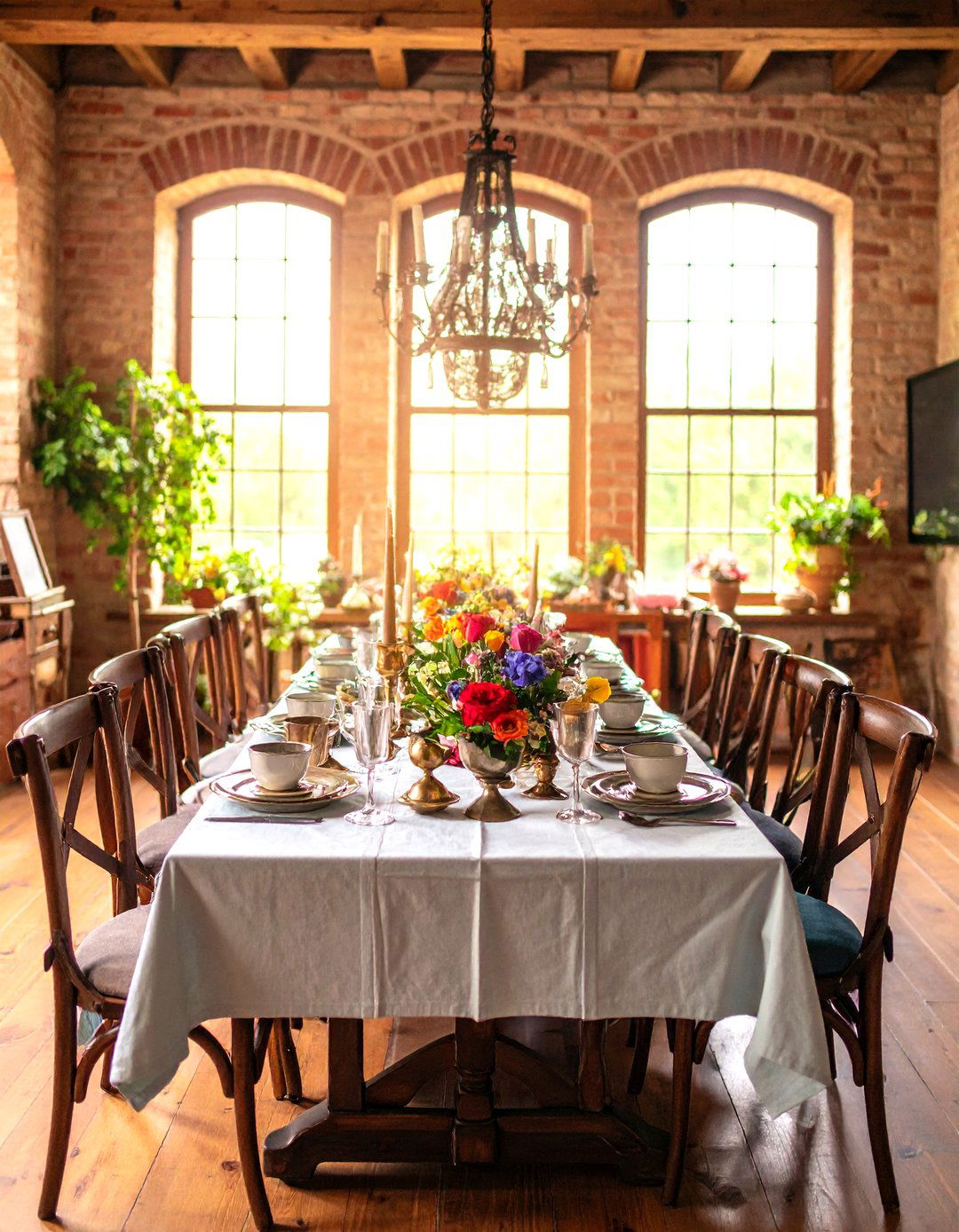
Pewter goblets reflected candlelight at feasts without silver’s cost, a charm modern replicas still provide. Mix ale cups with tulip-shaped wine goblets, hand-wash to preserve satin sheen, and store inverted. Between meals, display them on open shelves near the hearth to keep the medieval mood alive.
21. Medieval Forged Iron Hardware
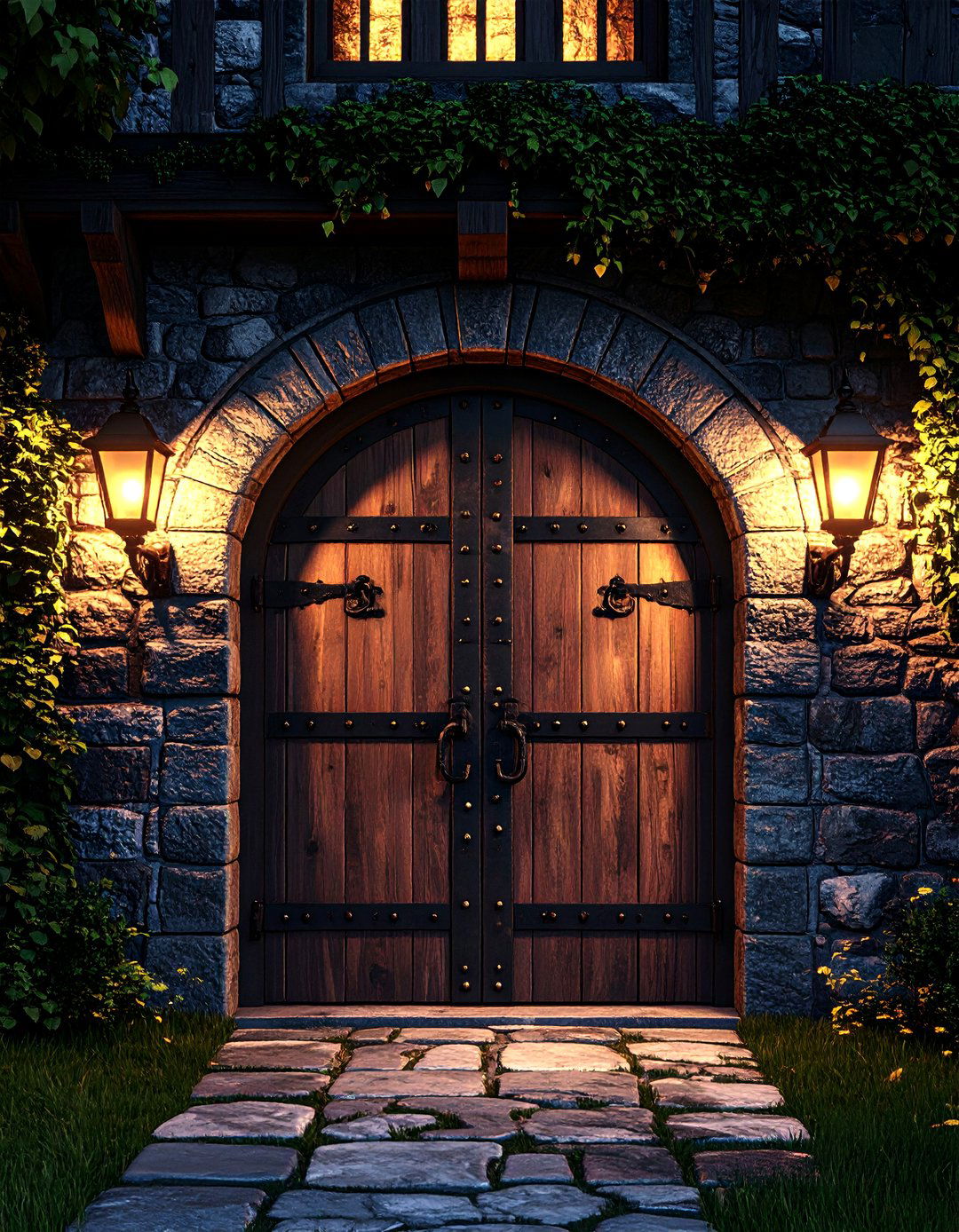
Hand-forged strap hinges and thumb latches broadcast medieval pedigree instantly. Install with lag screws into studs, finish with beeswax, and extend the detail to cabinet pulls. Every creak echoes monastery kitchens and ties doors, drawers, and shutters into one cohesive story.
22. Medieval Bench Seating with Linens

High-backed oak settles shielded diners from drafts and hid storage beneath flip-up seats. Modern benches pair that silhouette with linen-wrapped foam cushions secured by leather ties. Position a settle near the hearth, stow wool throws inside, and enjoy multifunctional seating steeped in period charm.
23. Medieval Trestle Tables for Flexibility
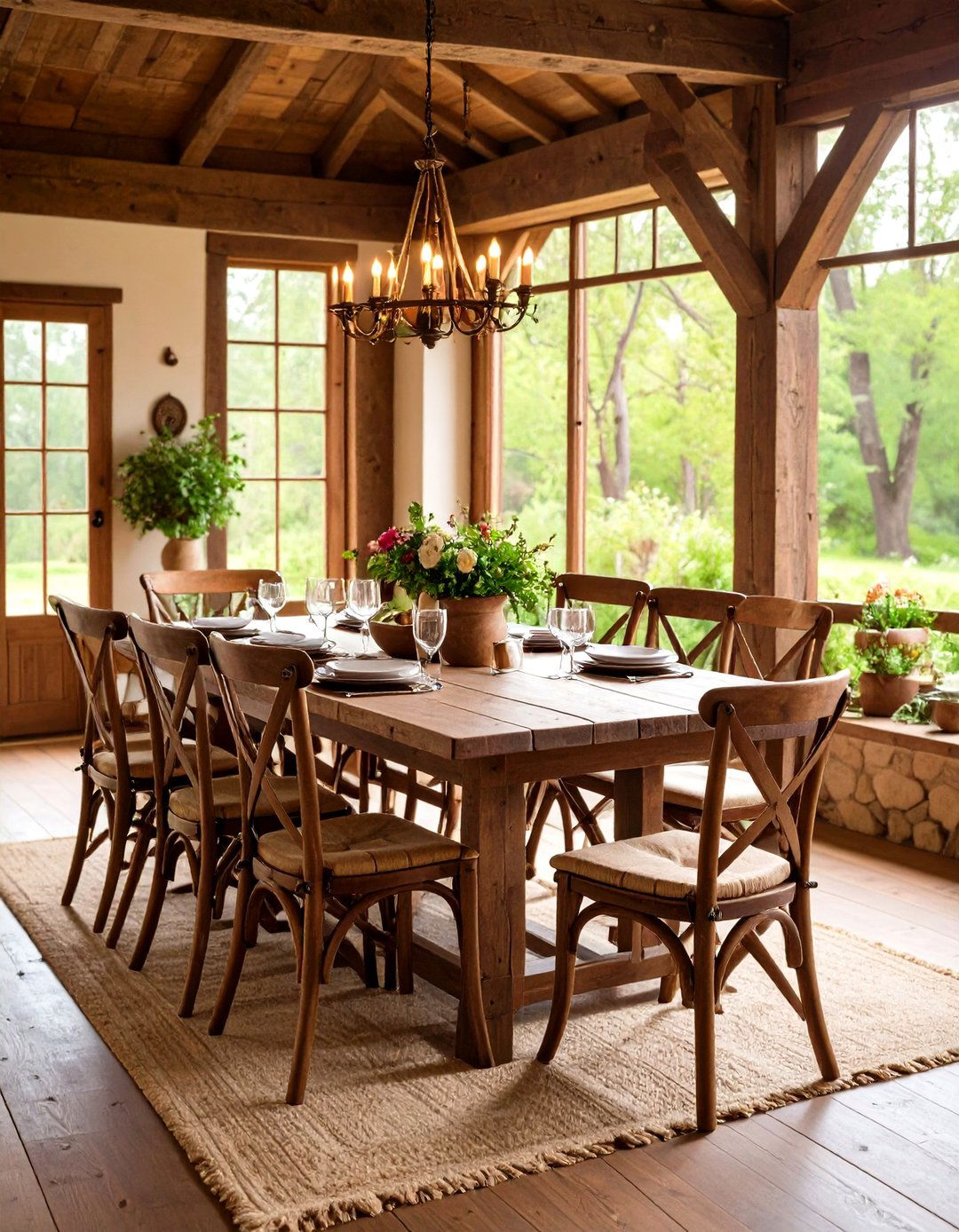
Trestle tables, built from two end supports and a removable plank top, let households clear halls quickly for dancing or sleeping. Reproductions still disassemble for transport — ideal for outdoor feasts or craft nights. Rough-hewn edges show age rings; folding X-stools preserve legroom and authenticity.
24. Medieval Antlers and Hunt Trophies
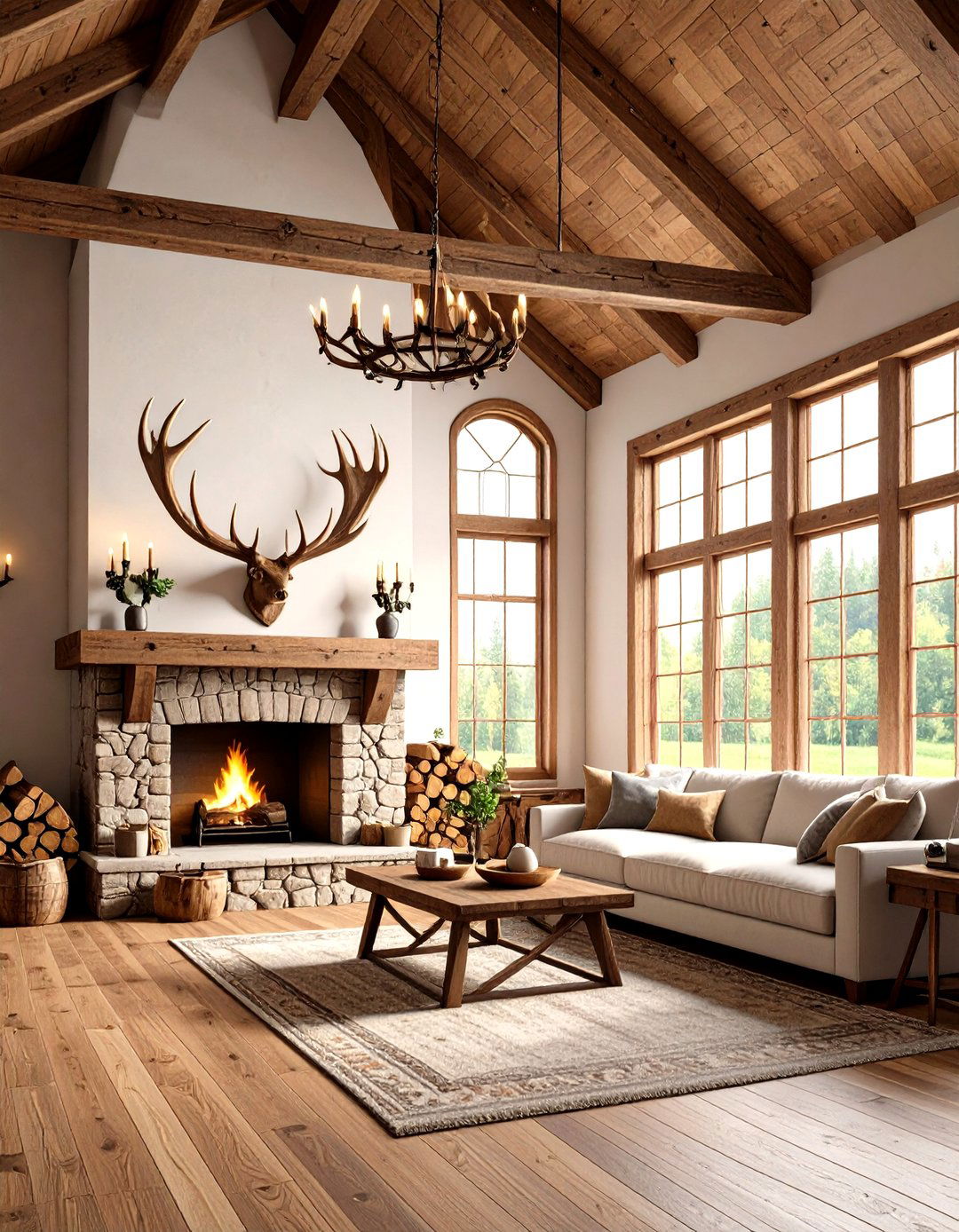
Great halls displayed antlers and hunting spoils to showcase prowess and provide horn for cups. Mount sustainable shed antlers on carved plaques, group three above a fireplace, or repurpose a single tine as a towel hook. Dust monthly and wax plaques so natural curves balance stone austerity.
25. Lancet Window Seats for Medieval Reading Nooks
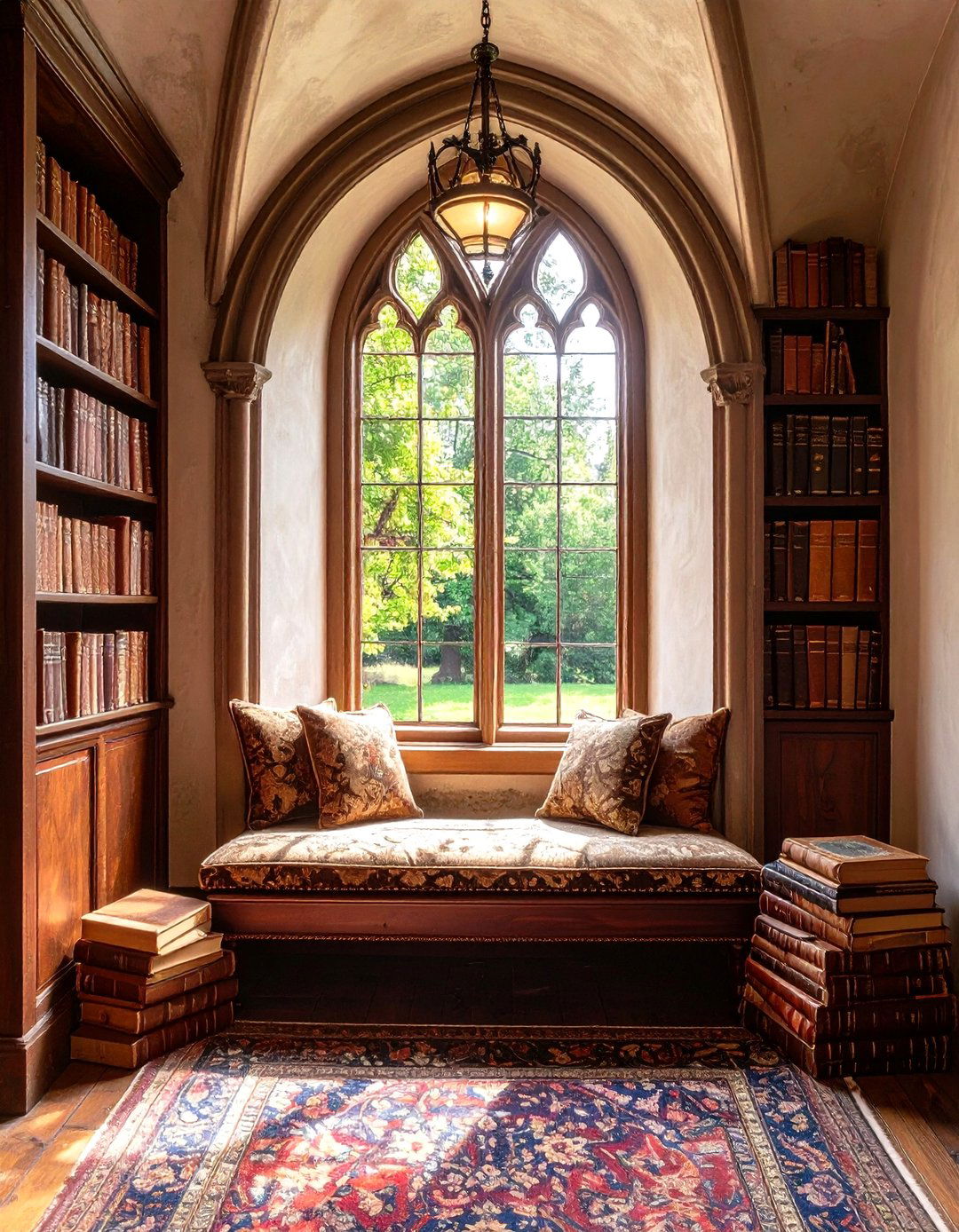
Tall lancet windows admit vertical shafts of light perfect for contemplative reading; adding a cushioned seat turns them into storybook perches. Build a base flush with the sill, upholster in damask, add a slim sconce overhead, and keep leather-bound favorites within reach. The nook mirrors scriptoria quiet while framing an ever-changing outdoor vista.
Conclusion:
Stone, timber, iron, wool, and heraldry — each medieval element unites practicality with time-tested beauty. By layering textured materials, candle-warm lighting, and artisan craftsmanship, you invite the resilience, hospitality, and quiet grandeur of the Middle Ages into modern life. Mix and match these ideas at will: even a single wrought-iron sconce or heraldic rug can spark conversation and transform a space into a welcoming, historically resonant retreat.


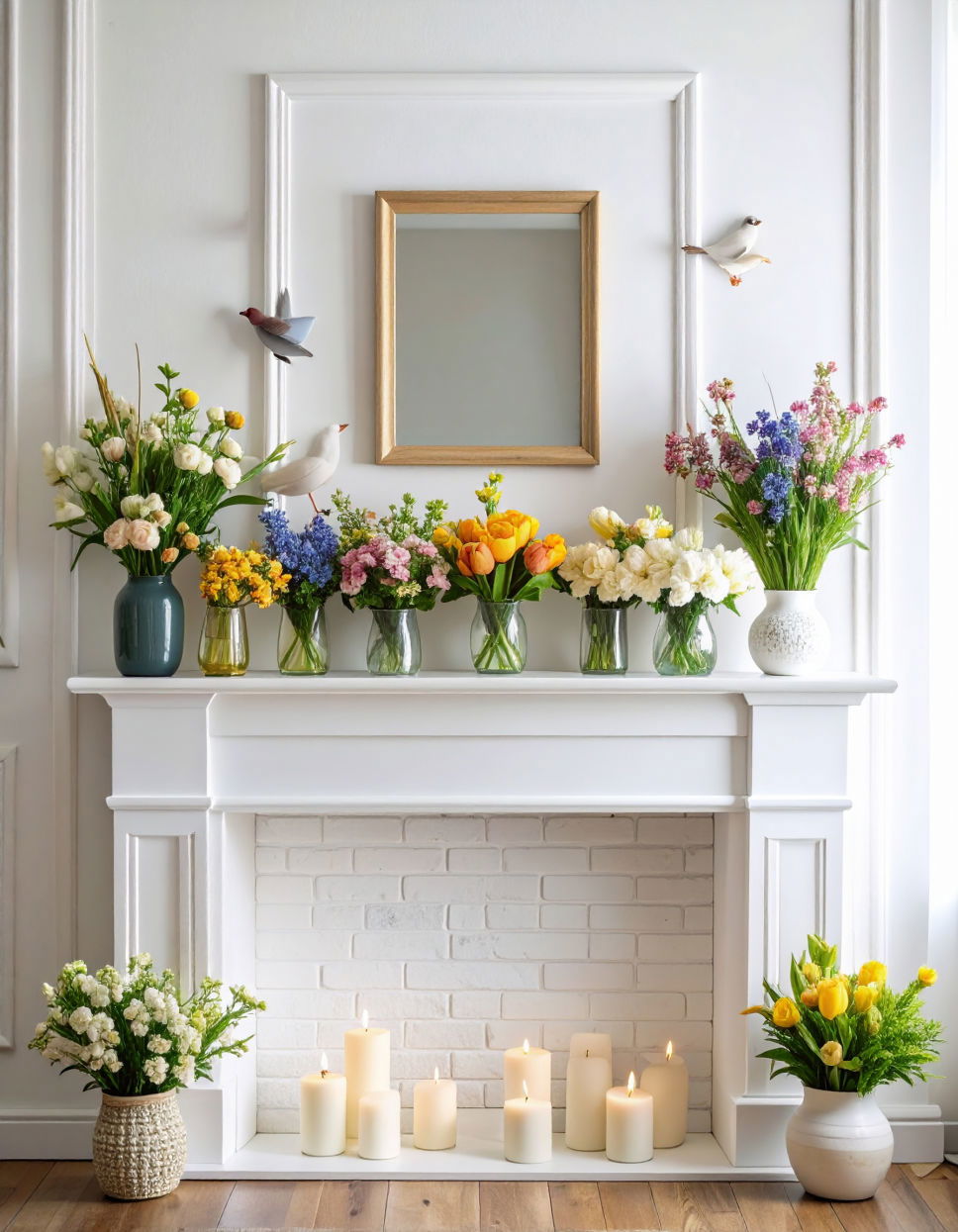
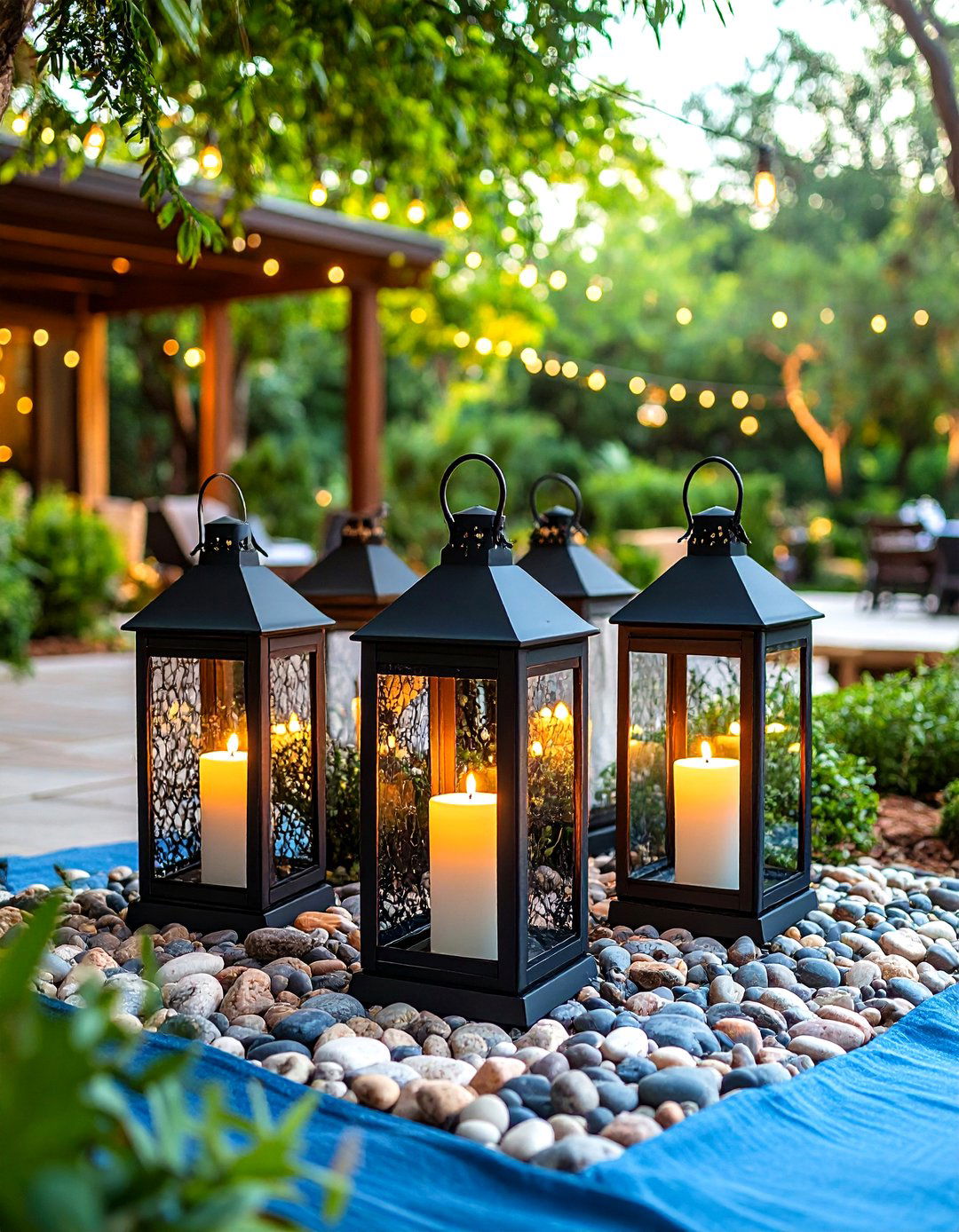
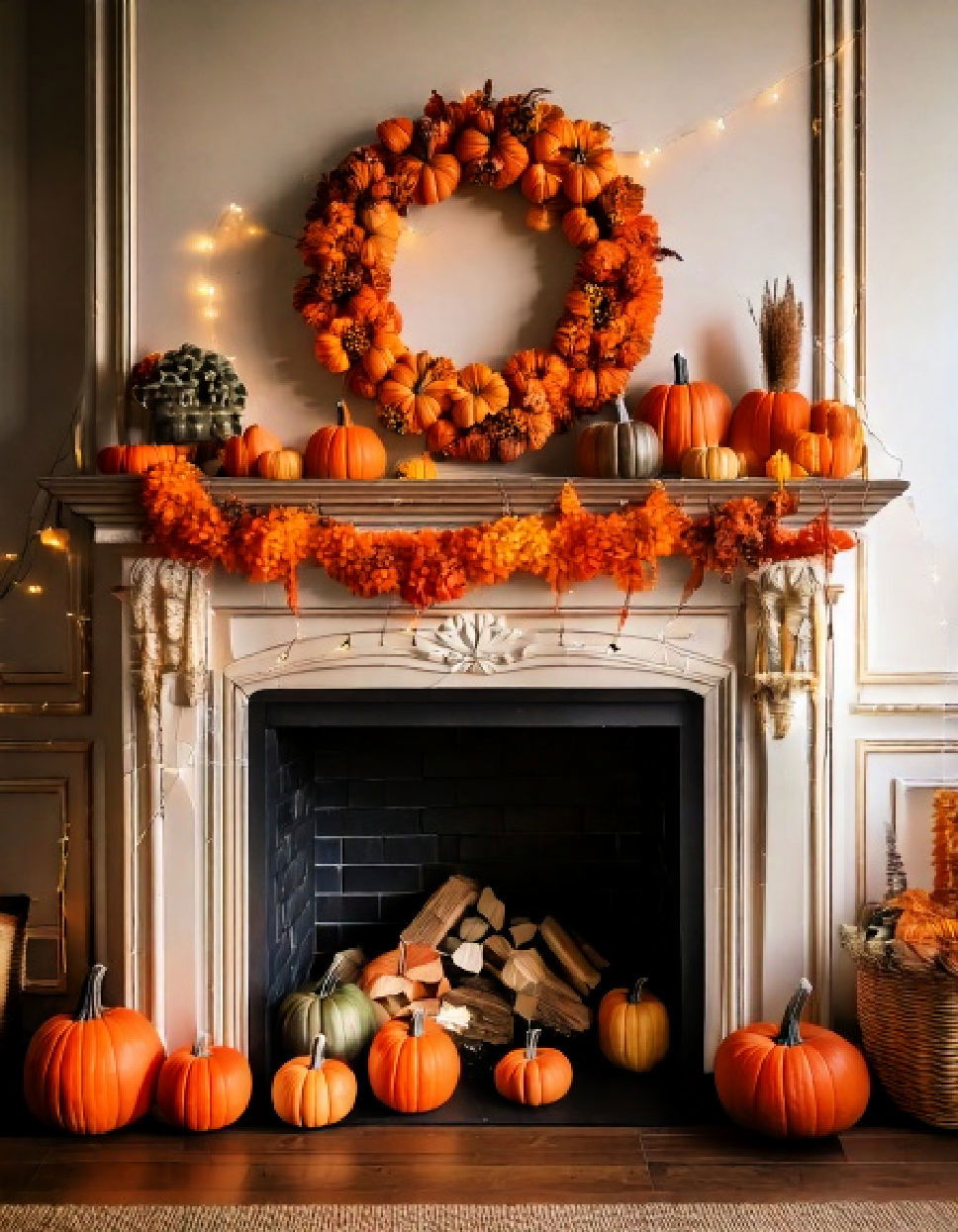
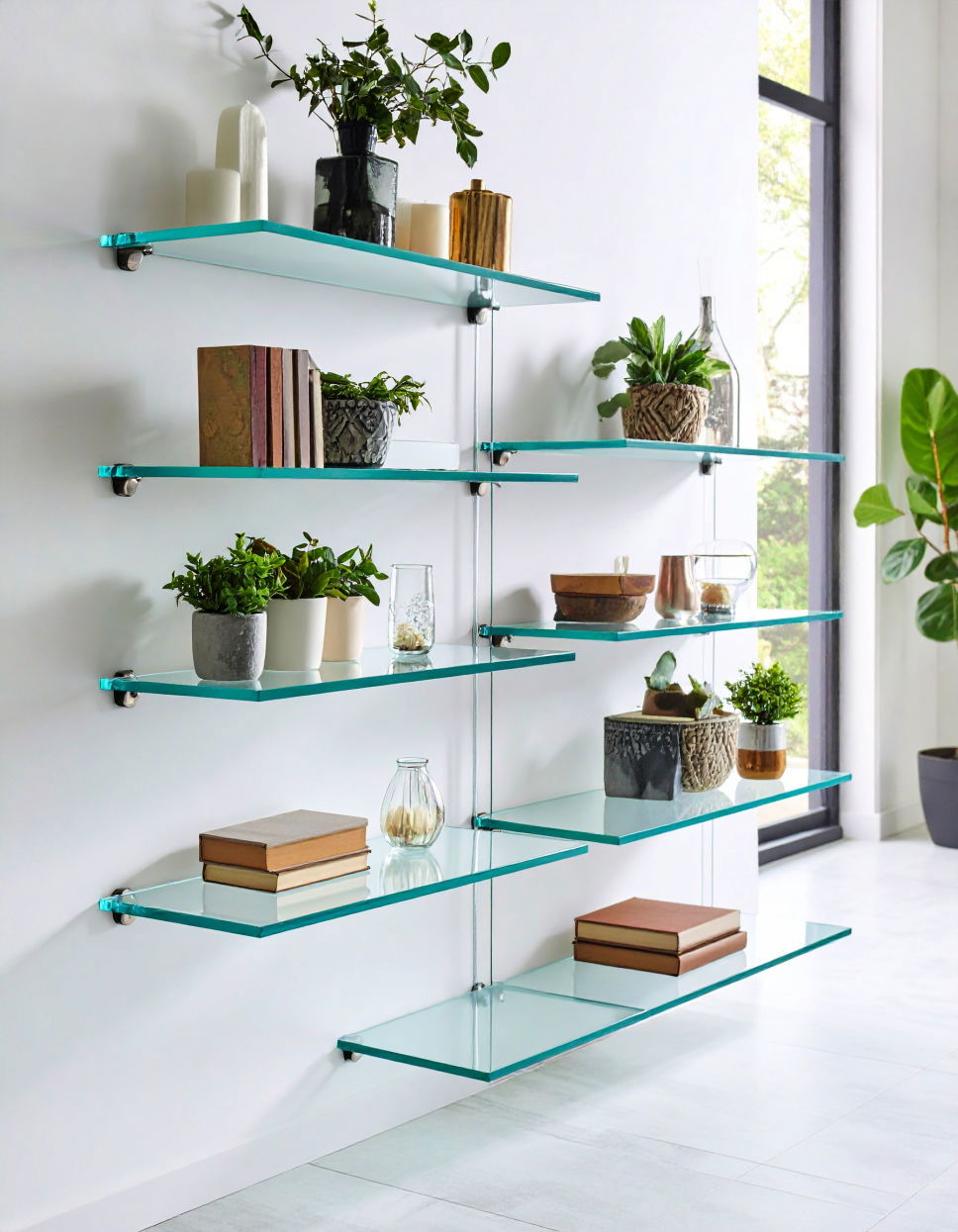
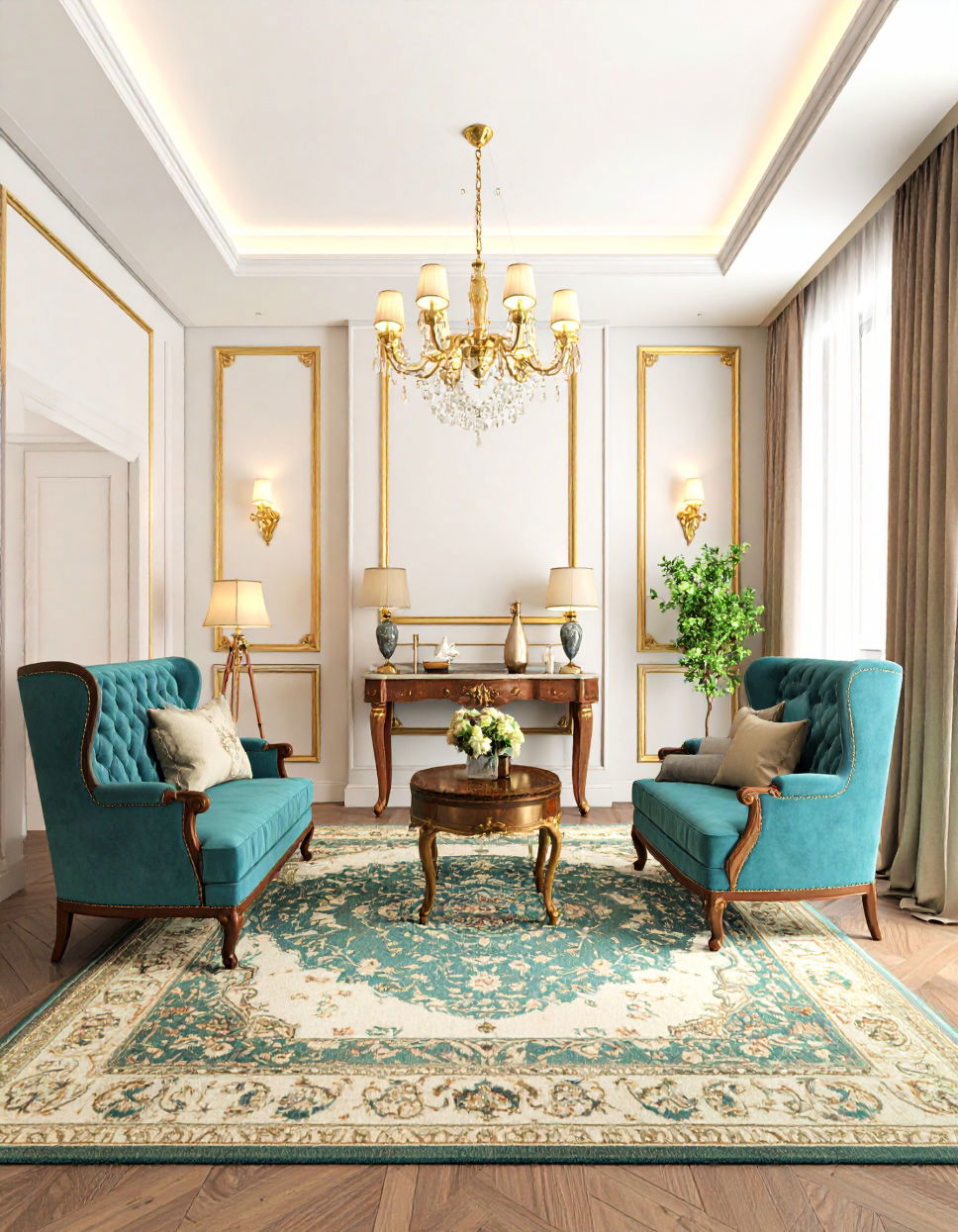

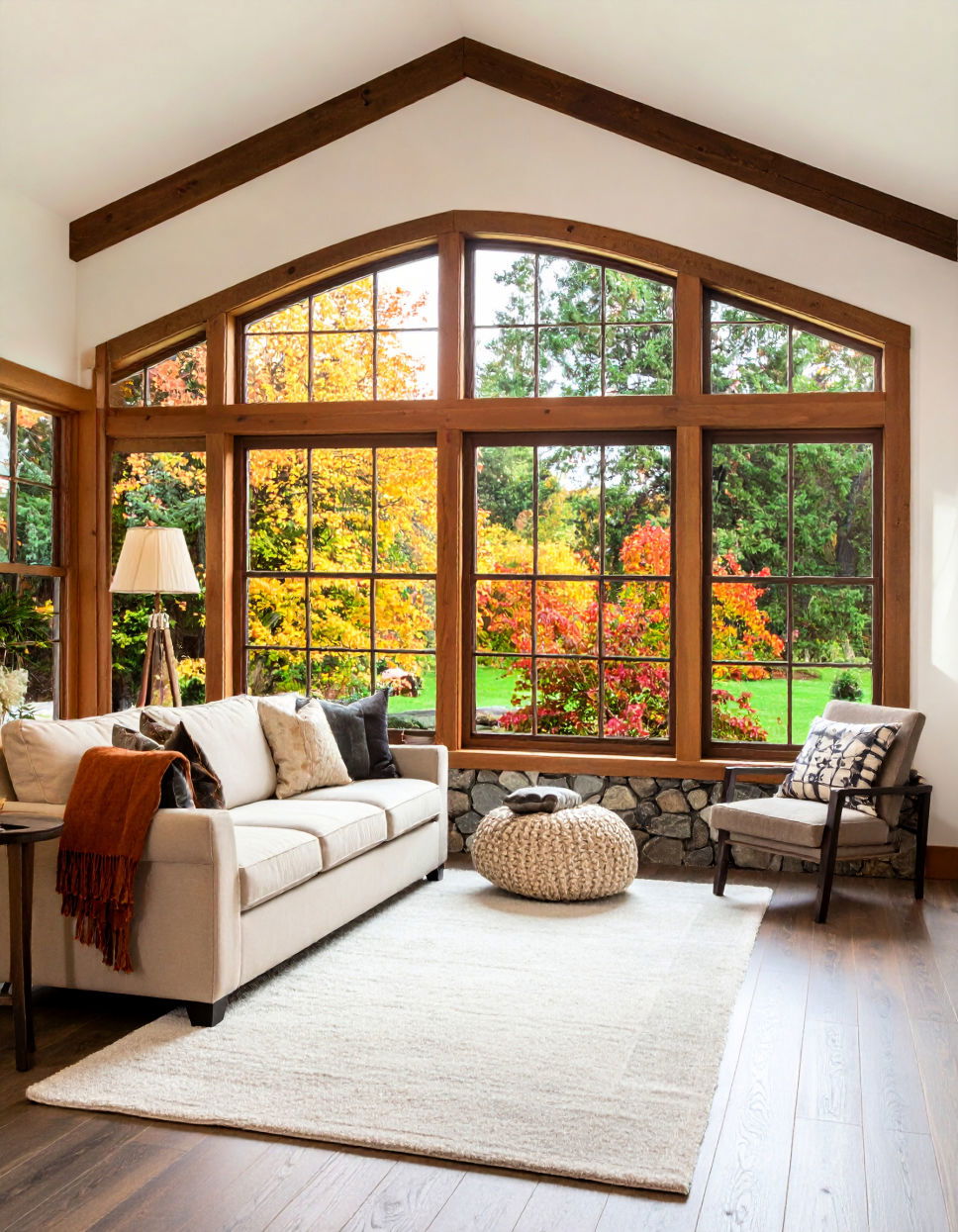
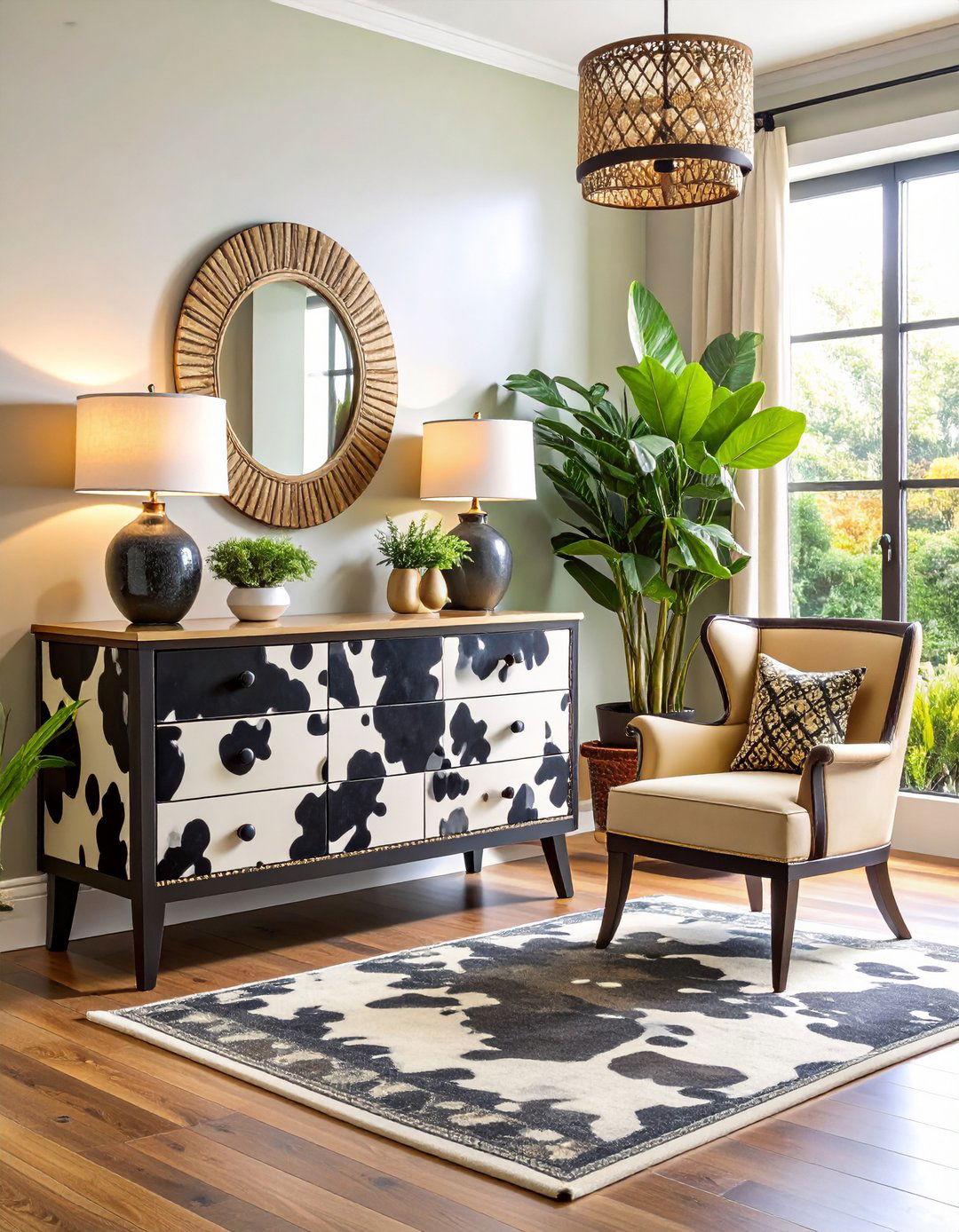
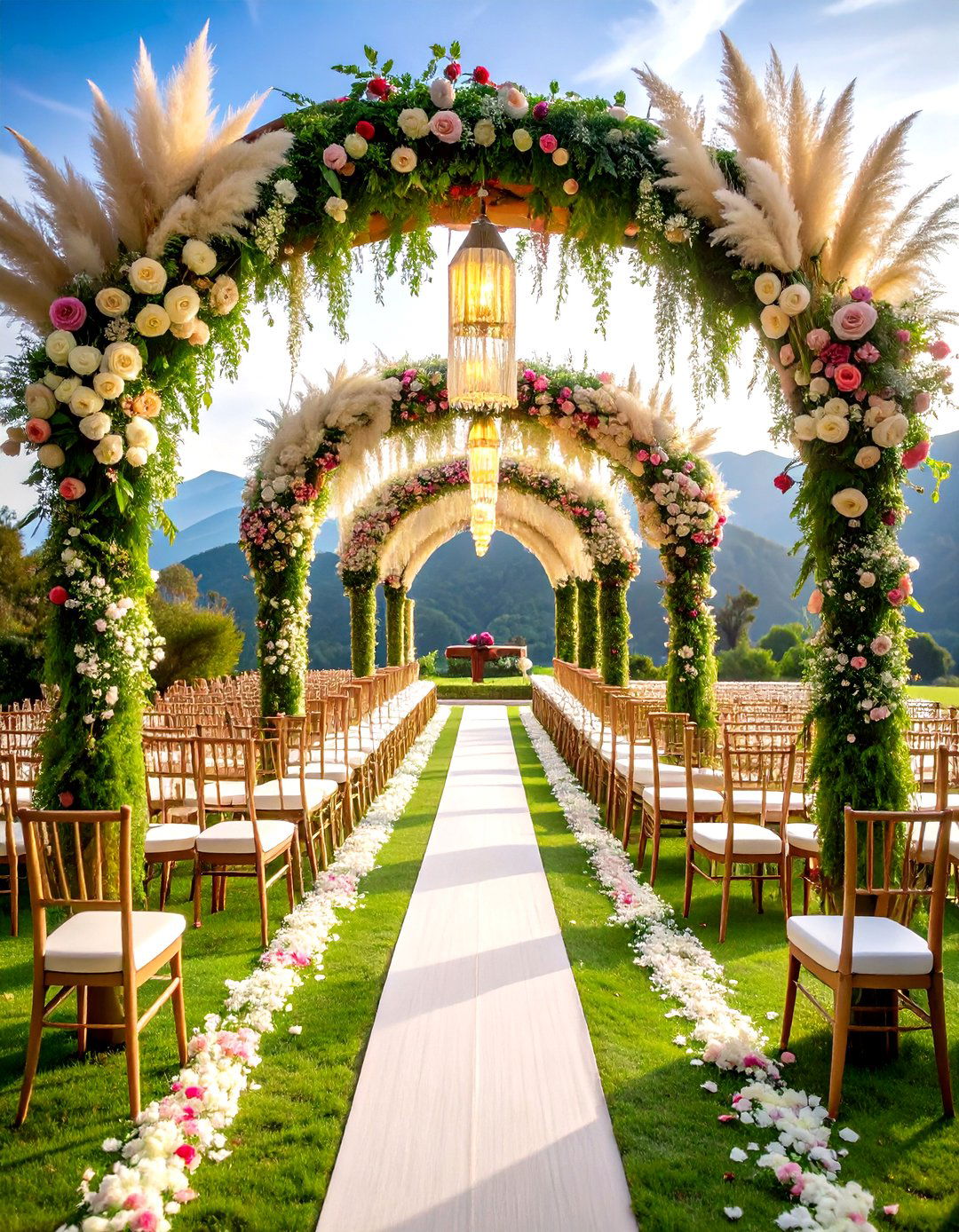



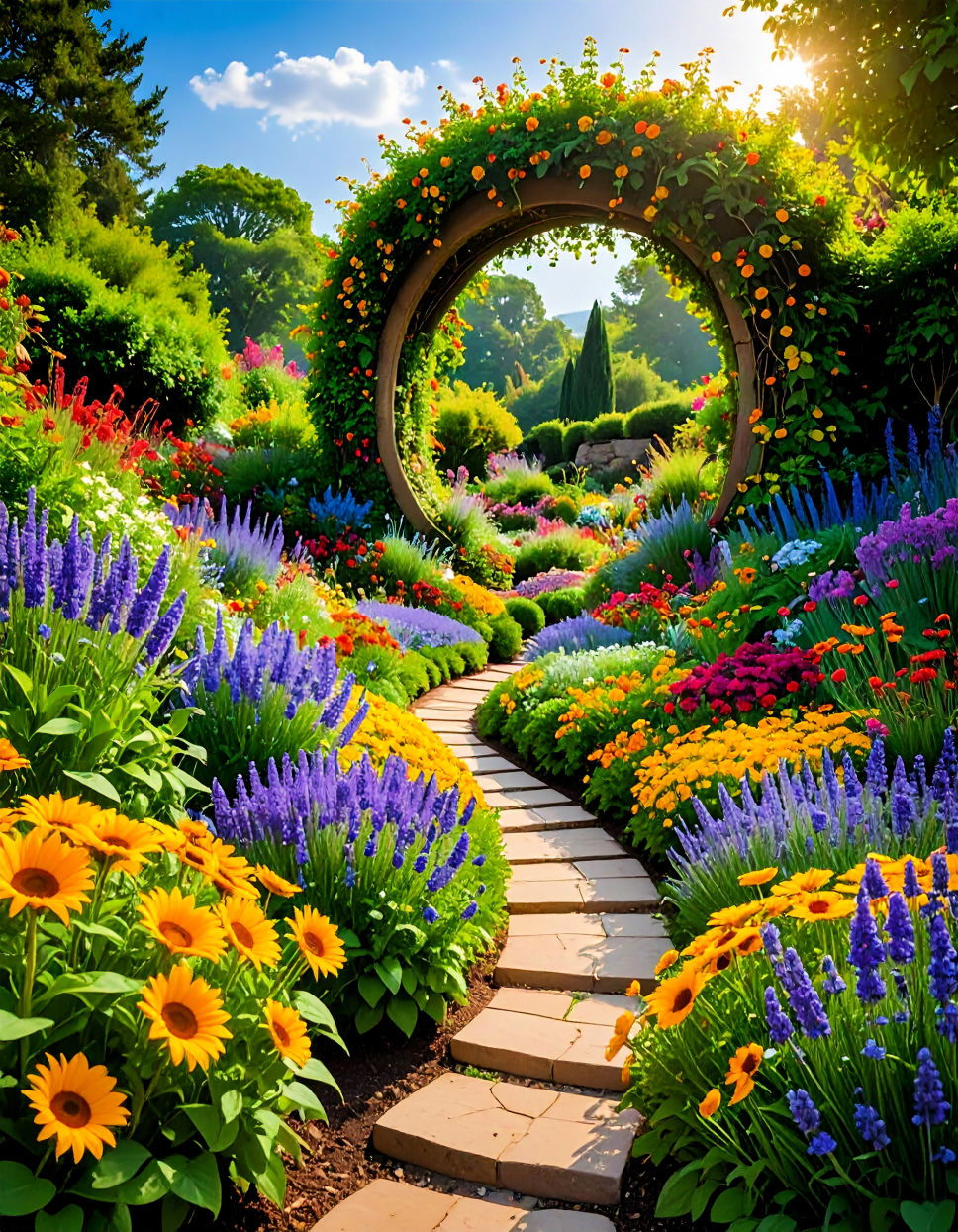
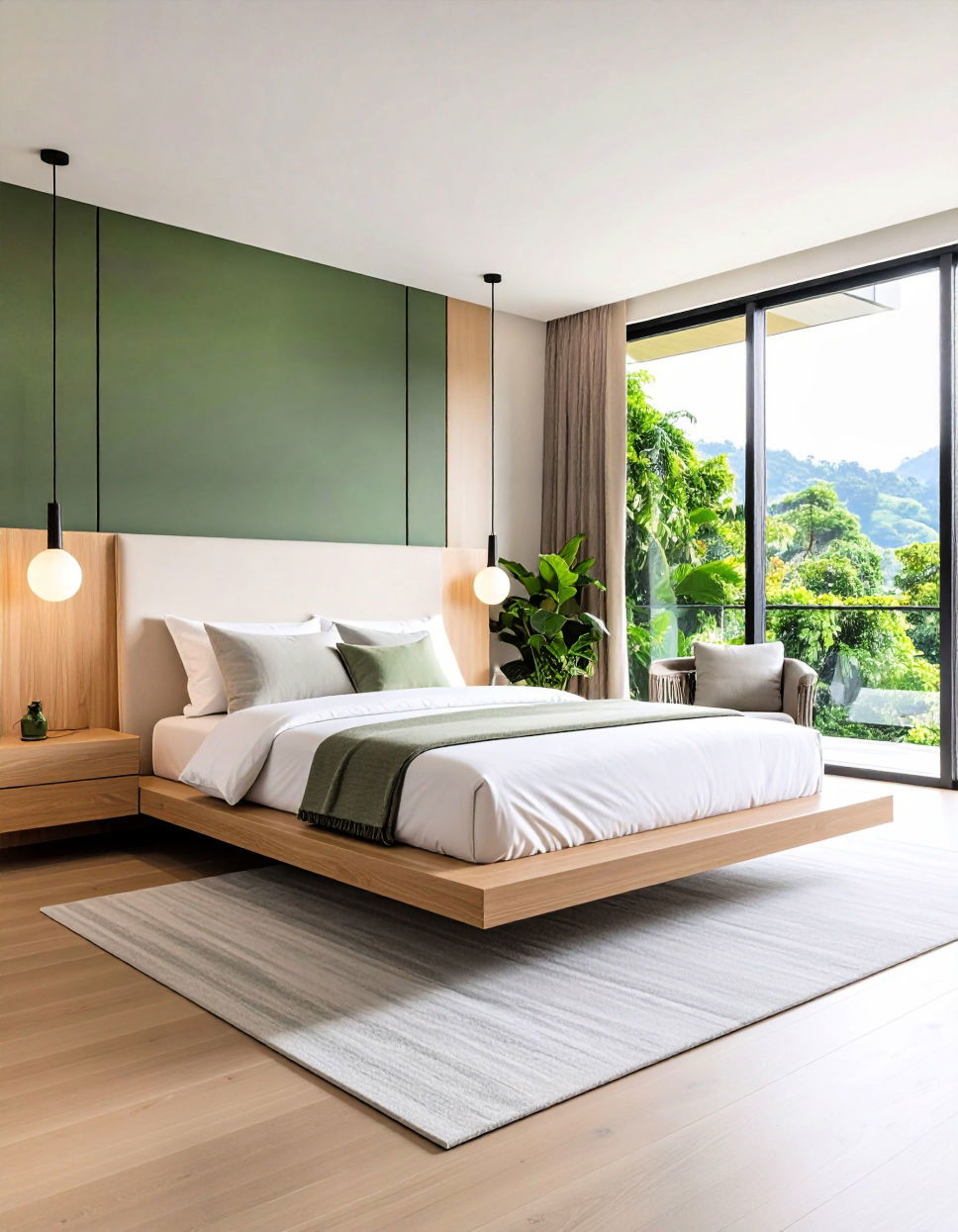
Leave a Reply